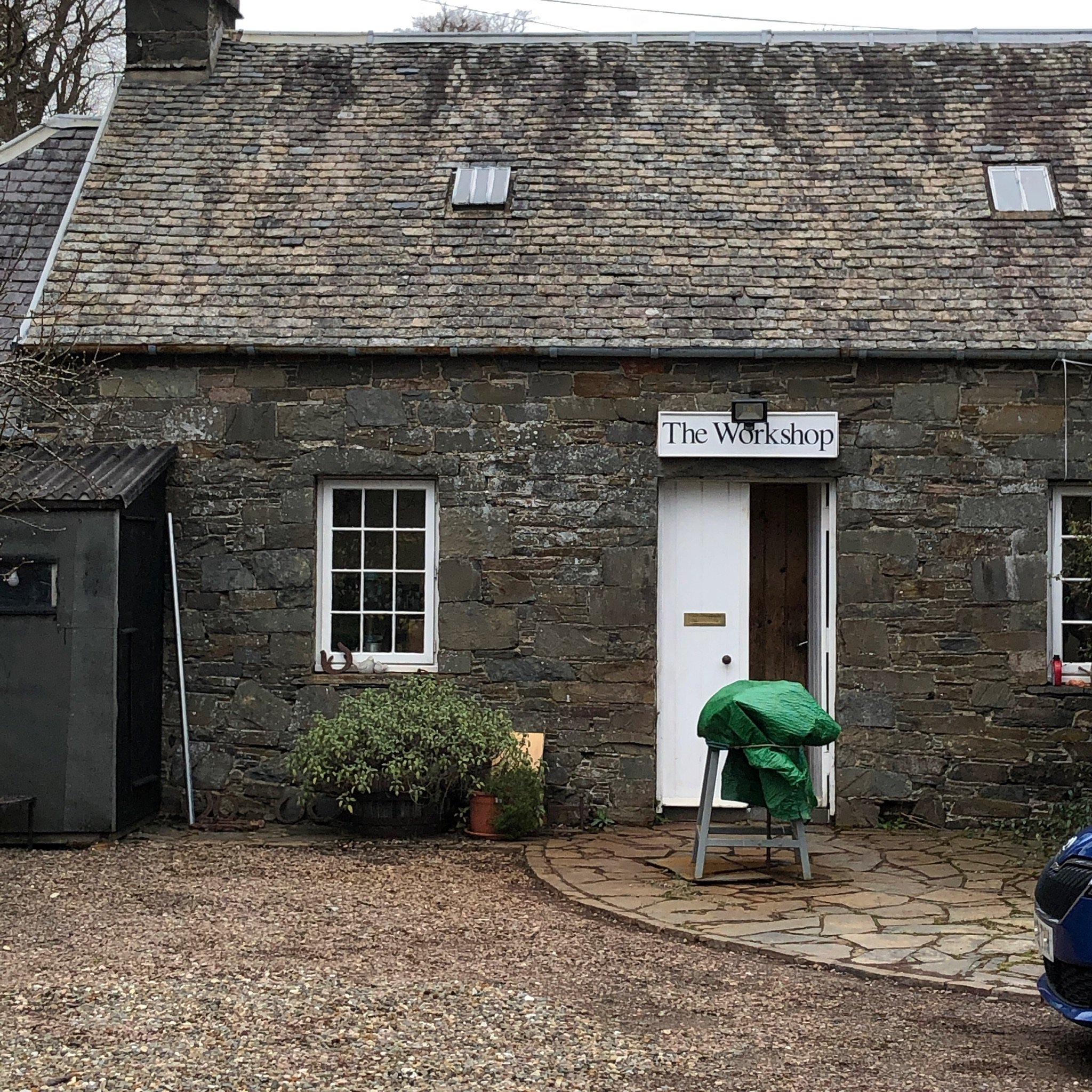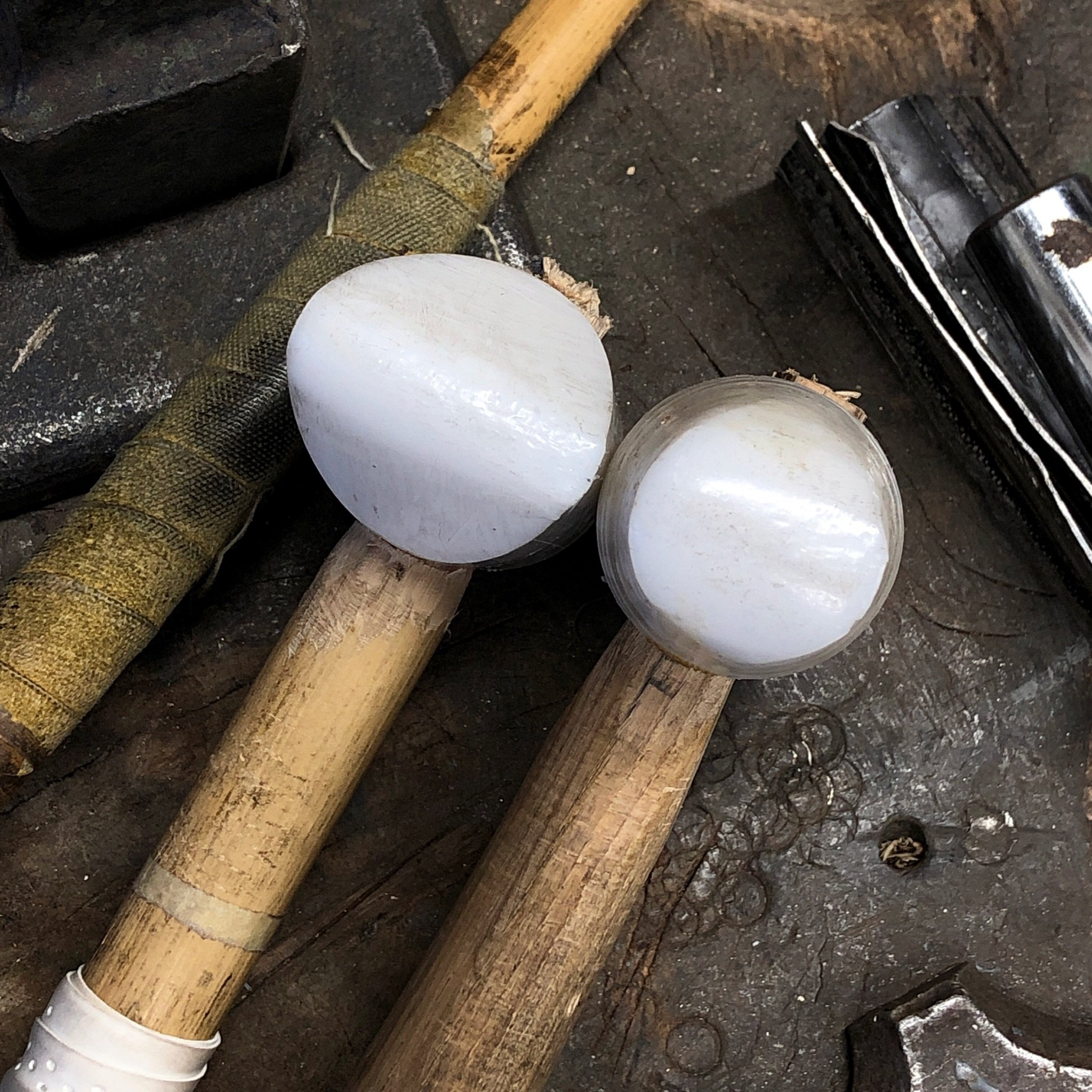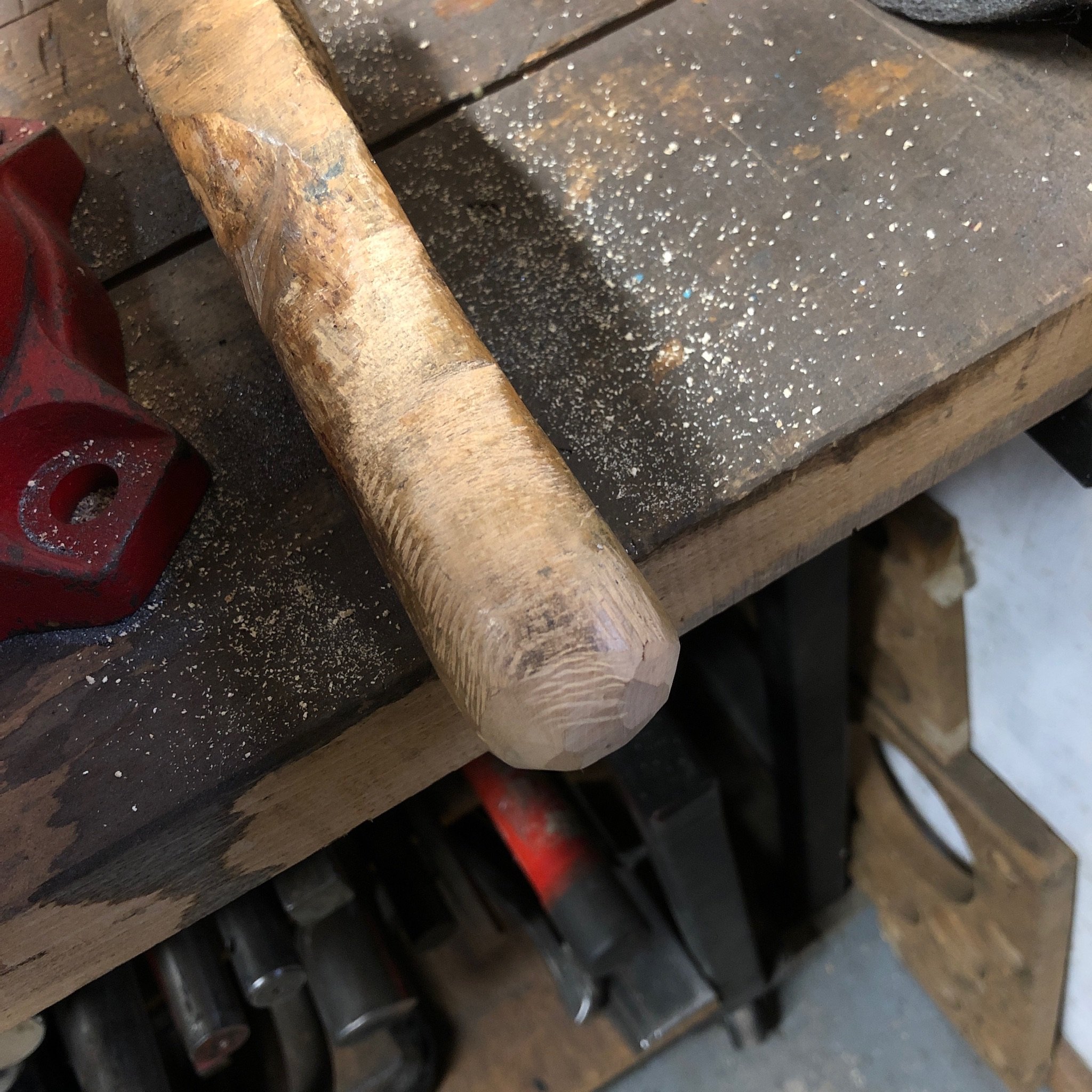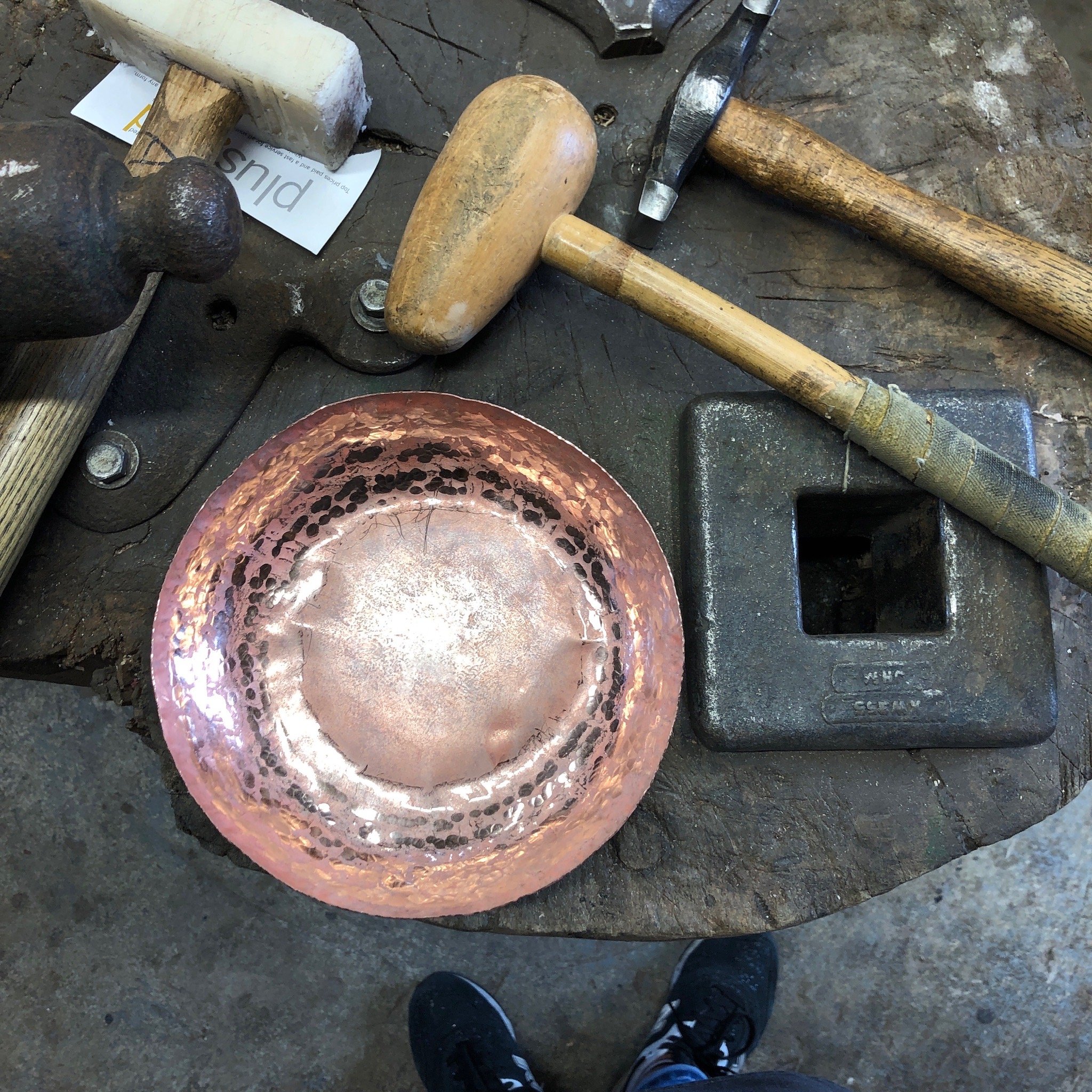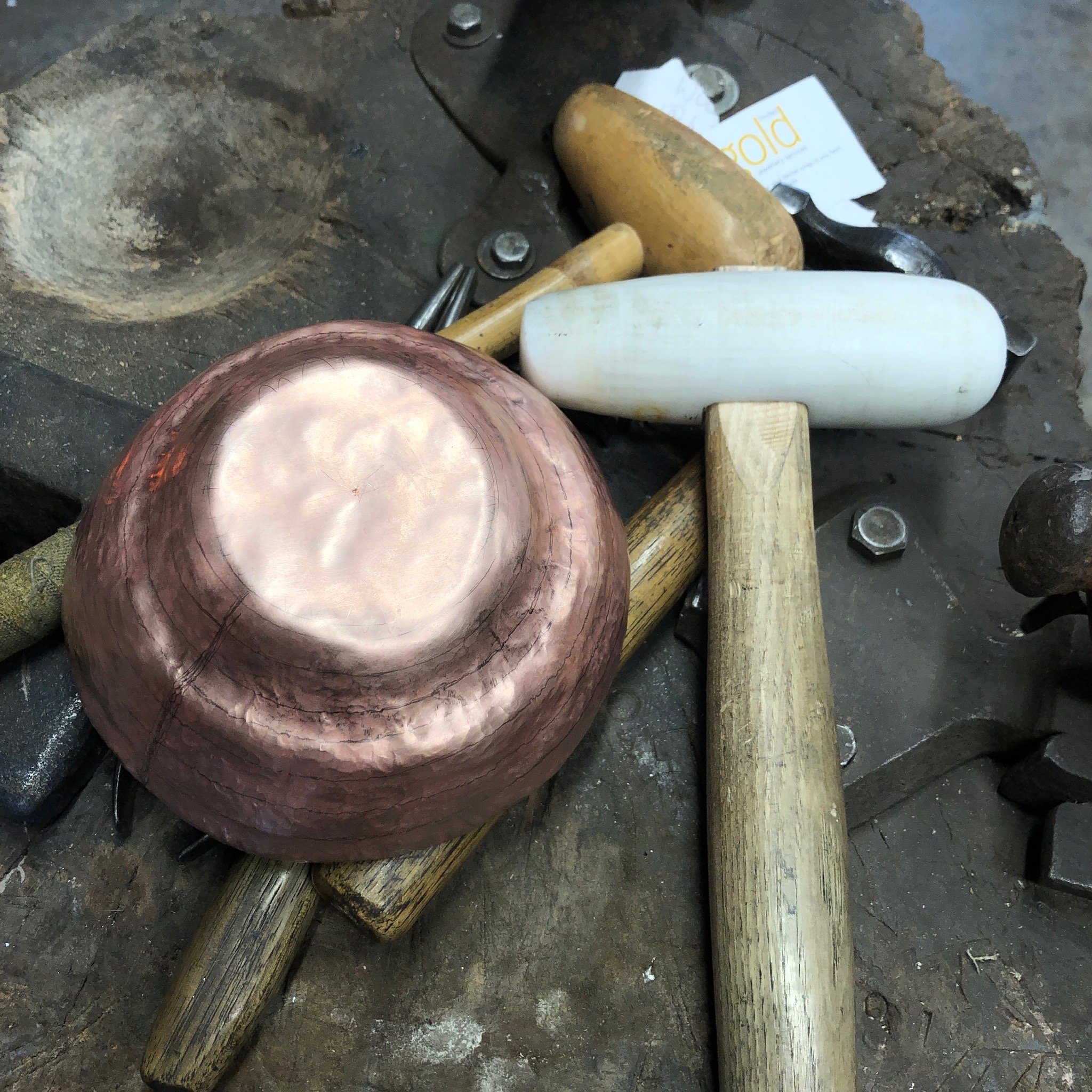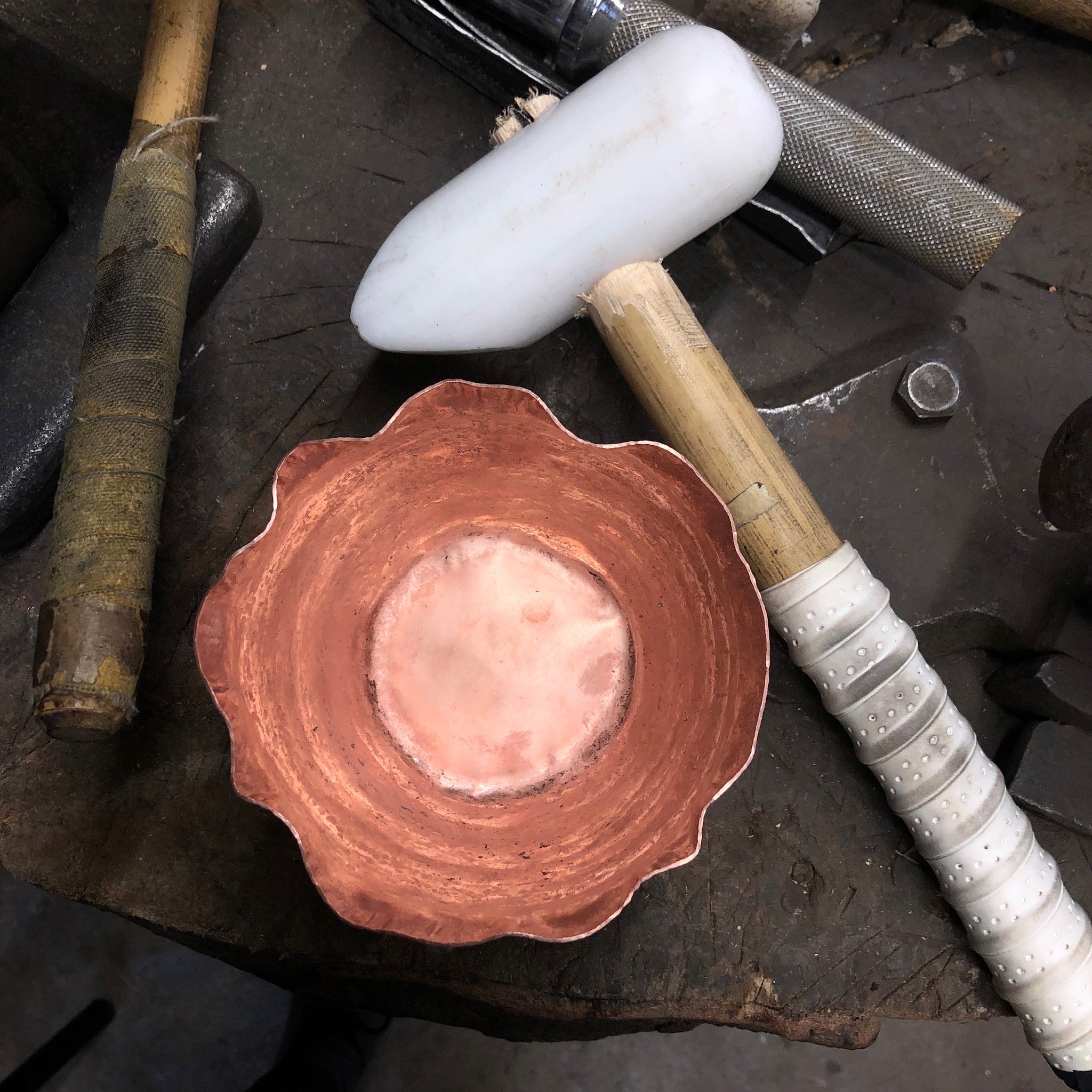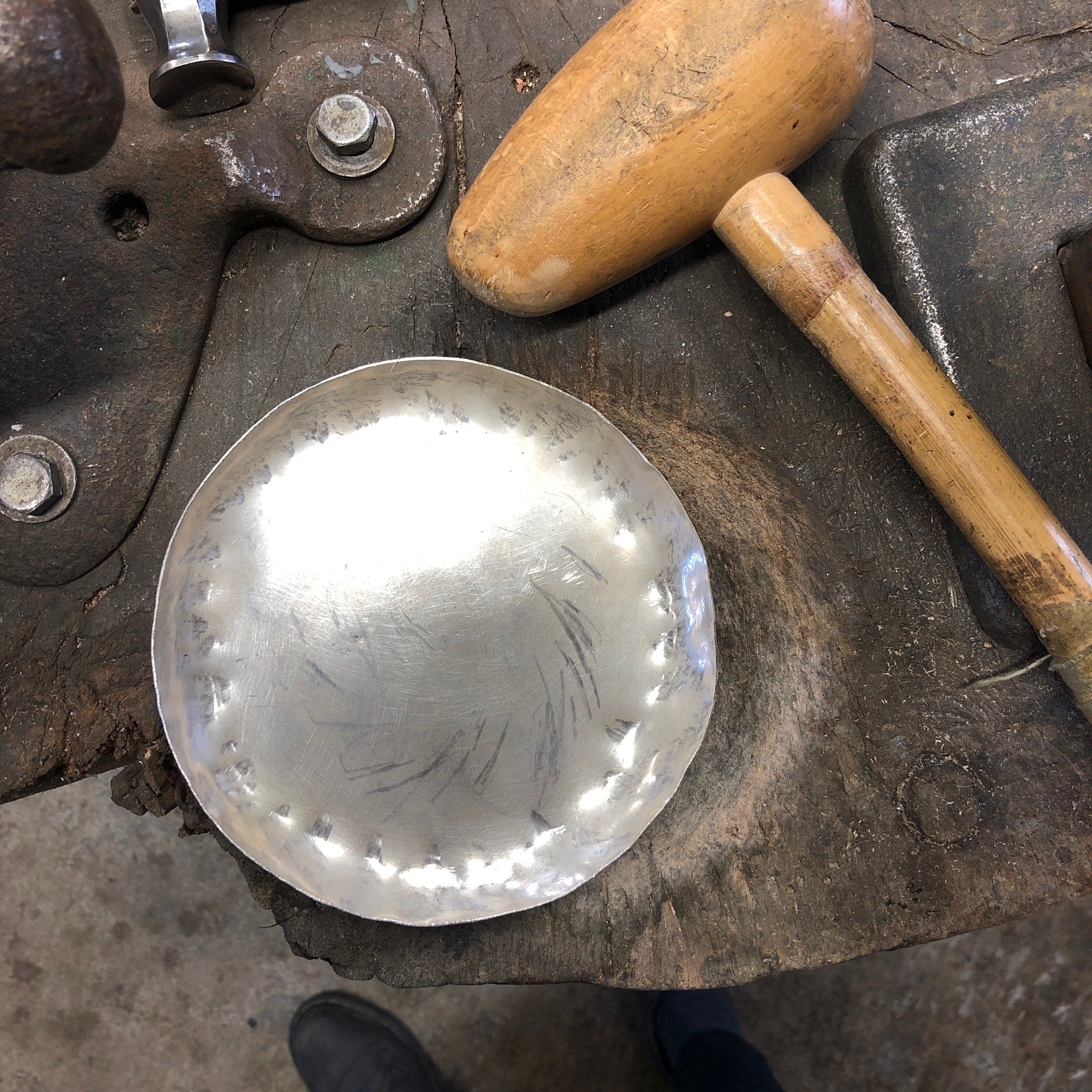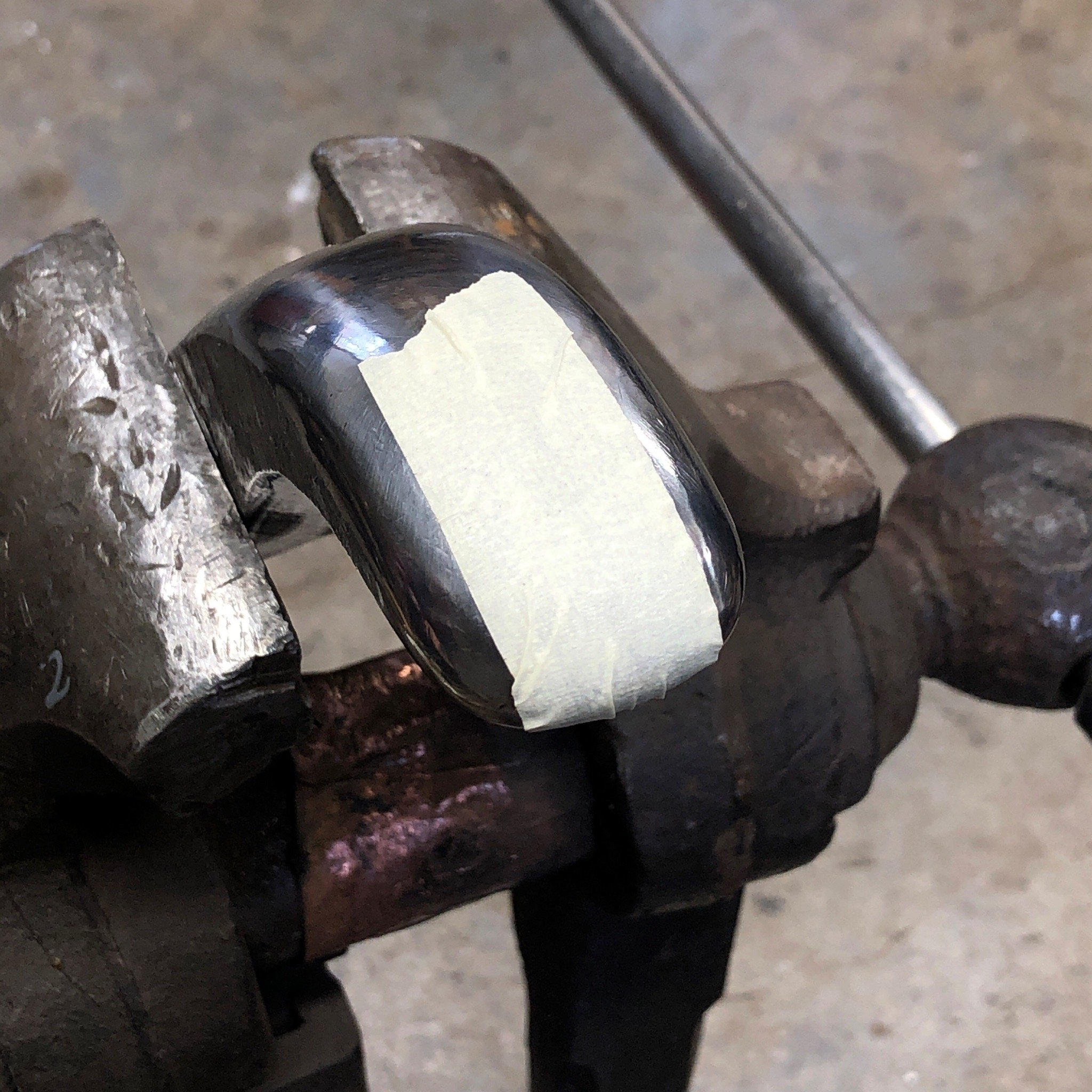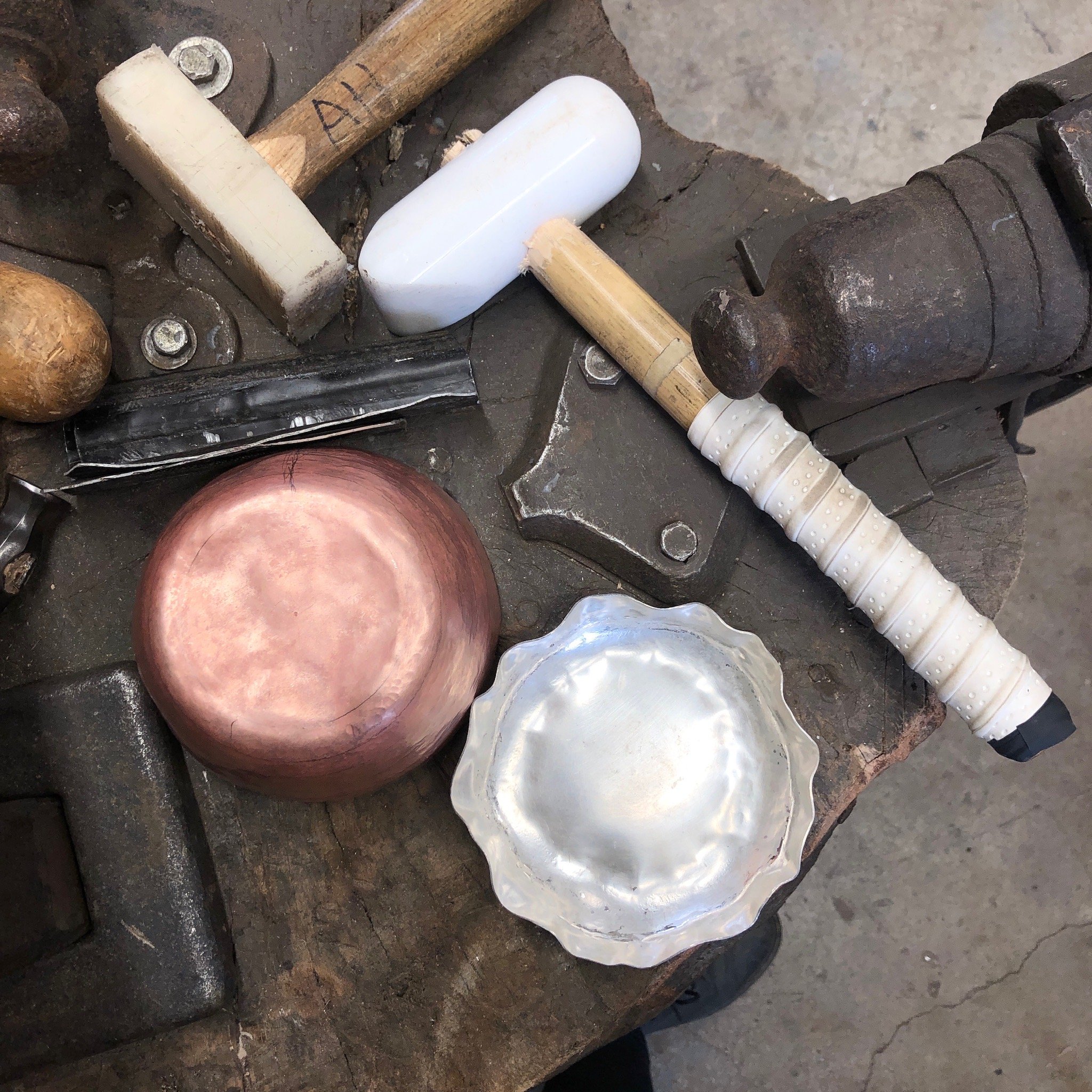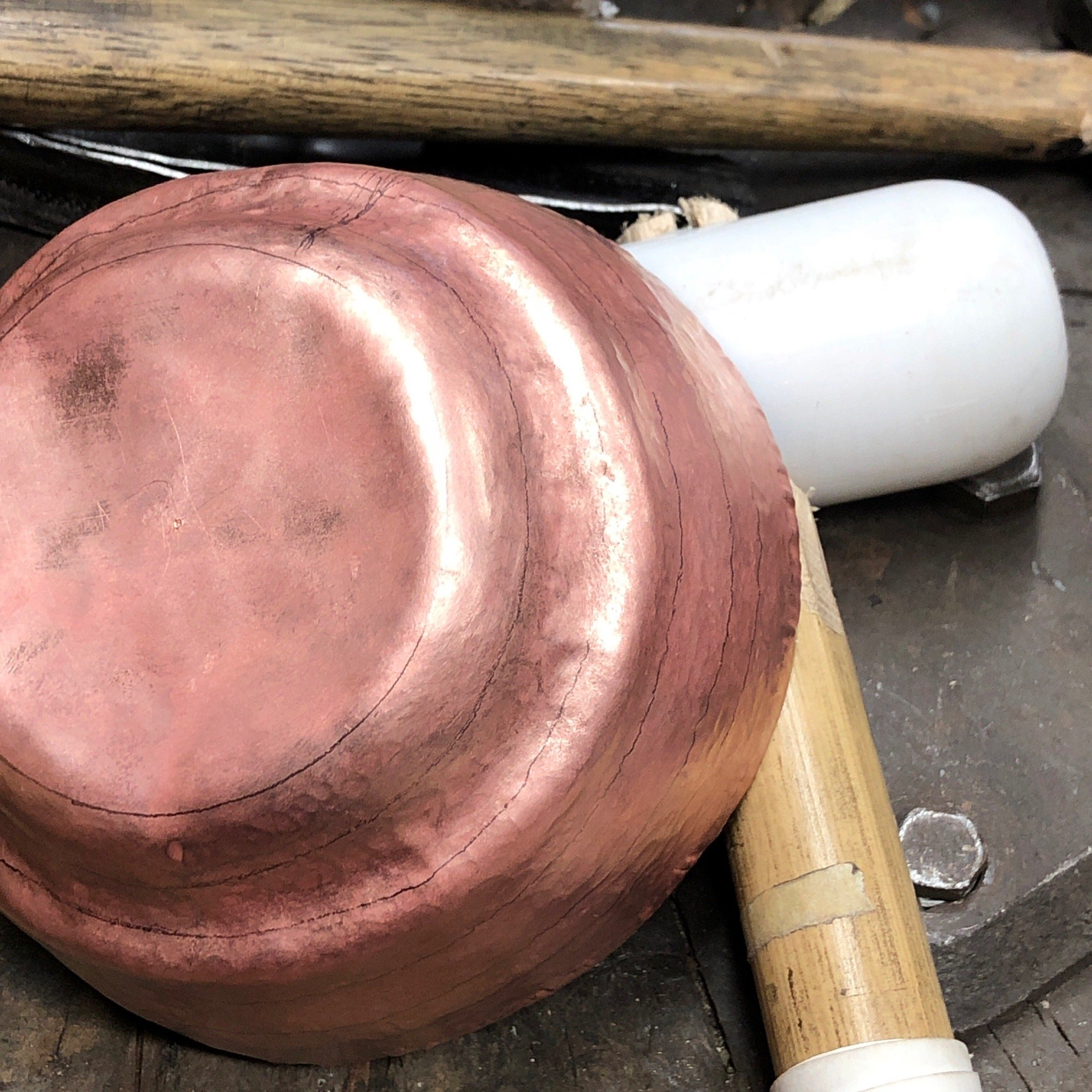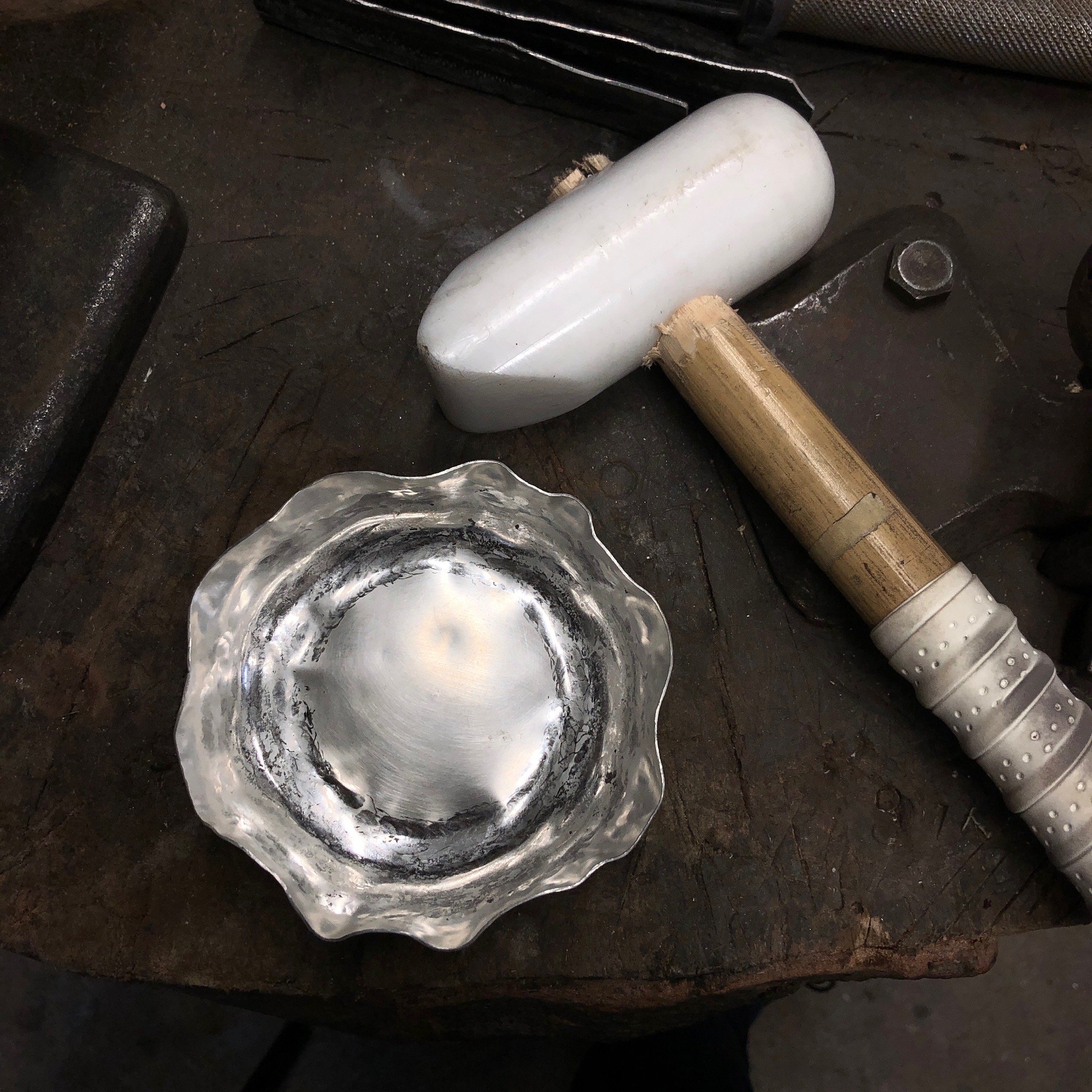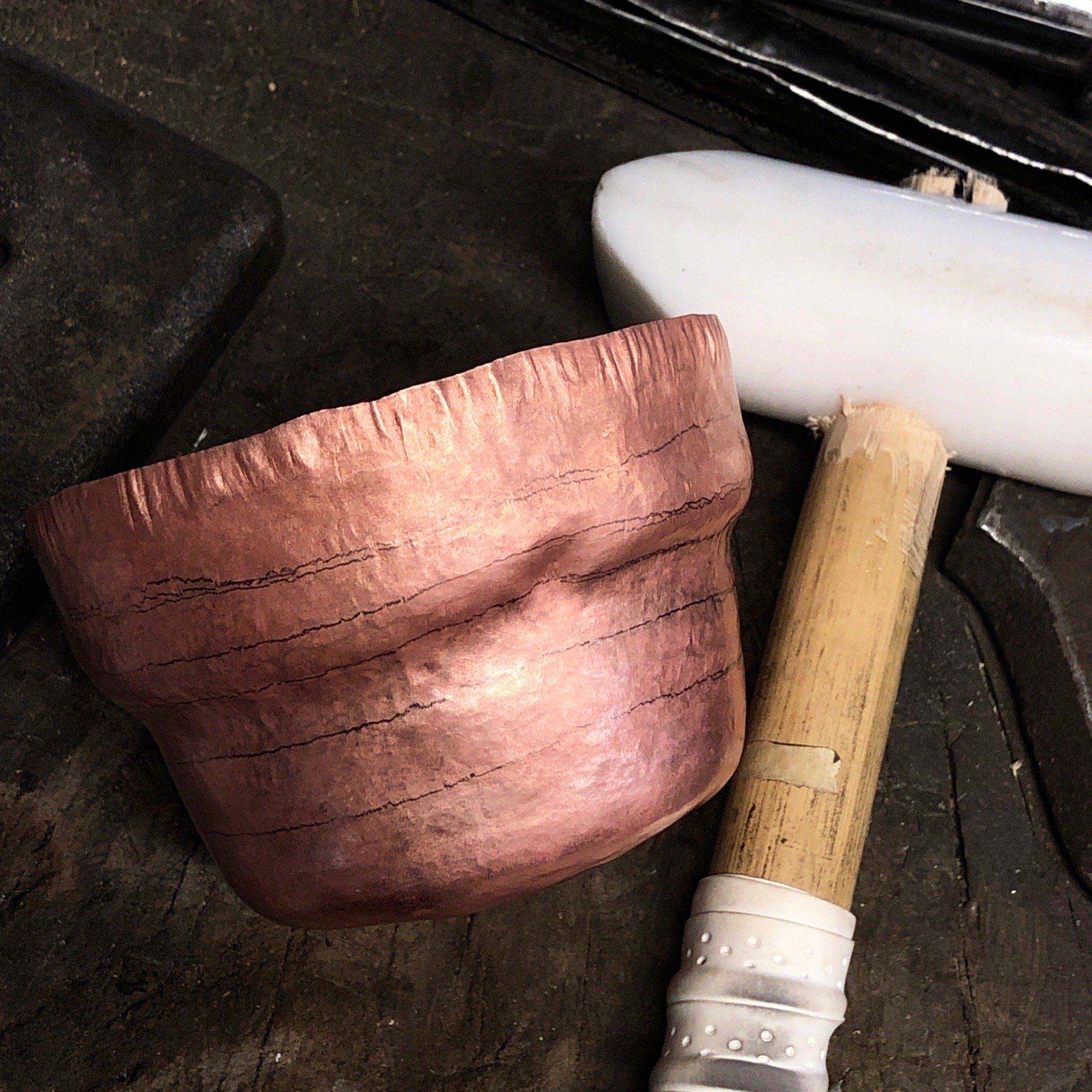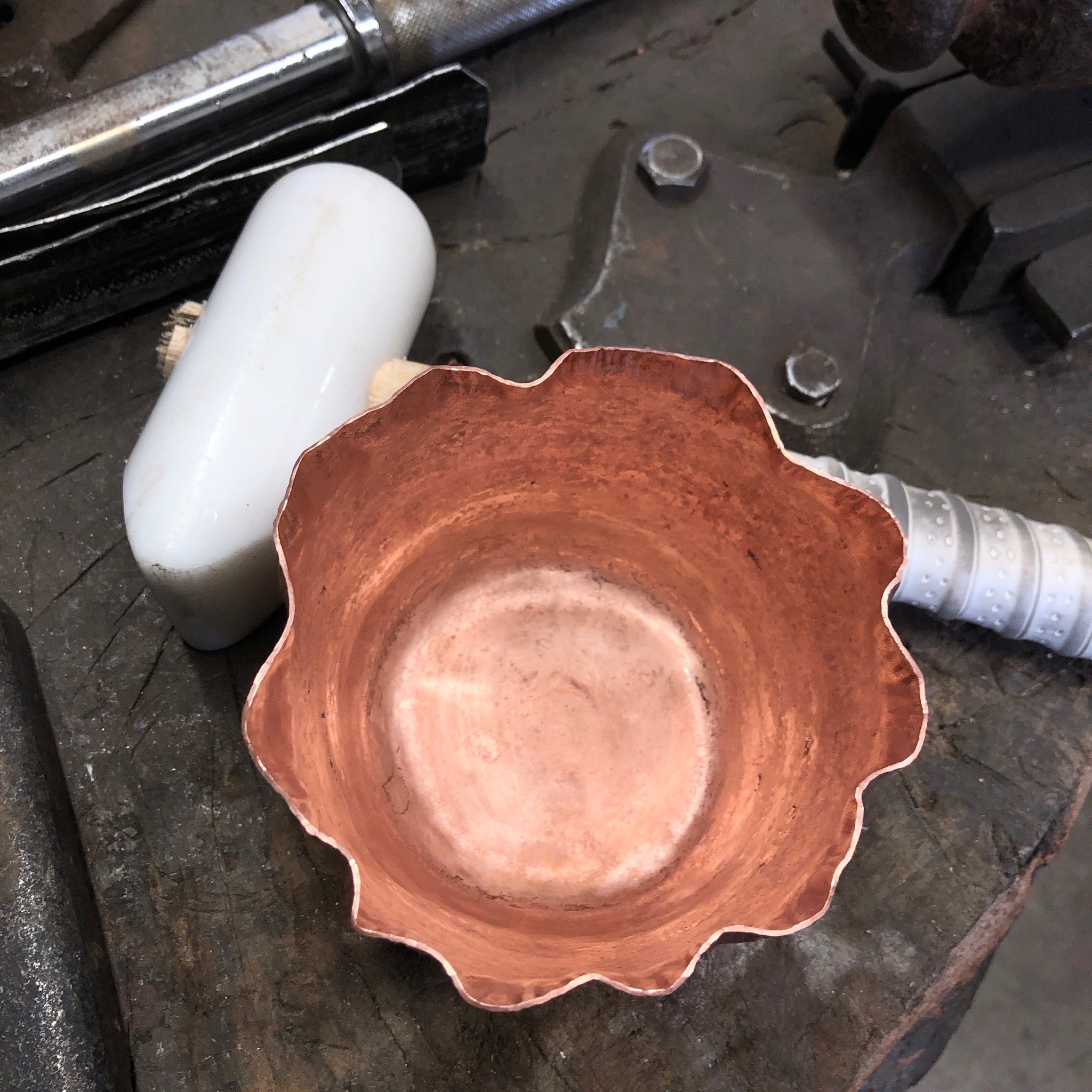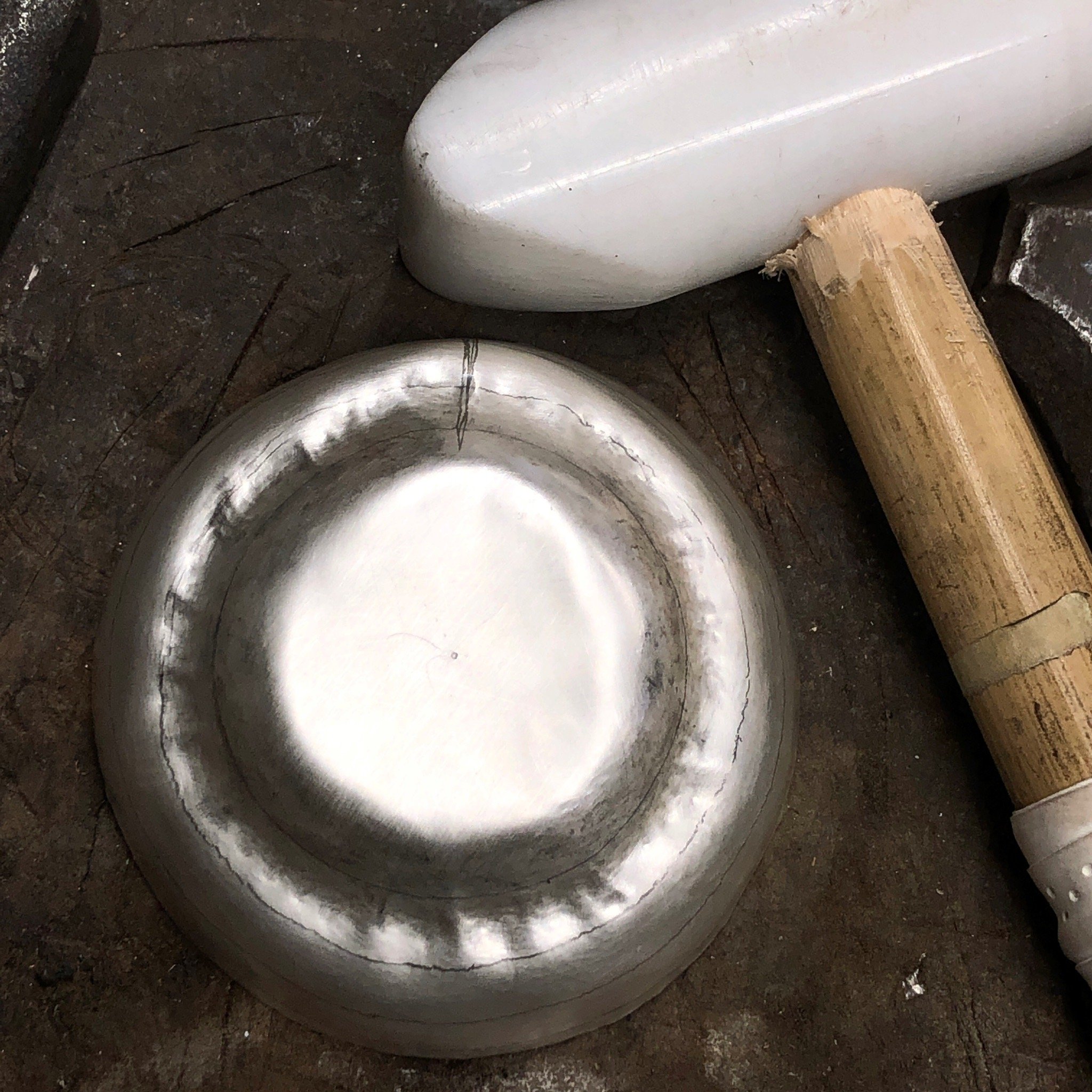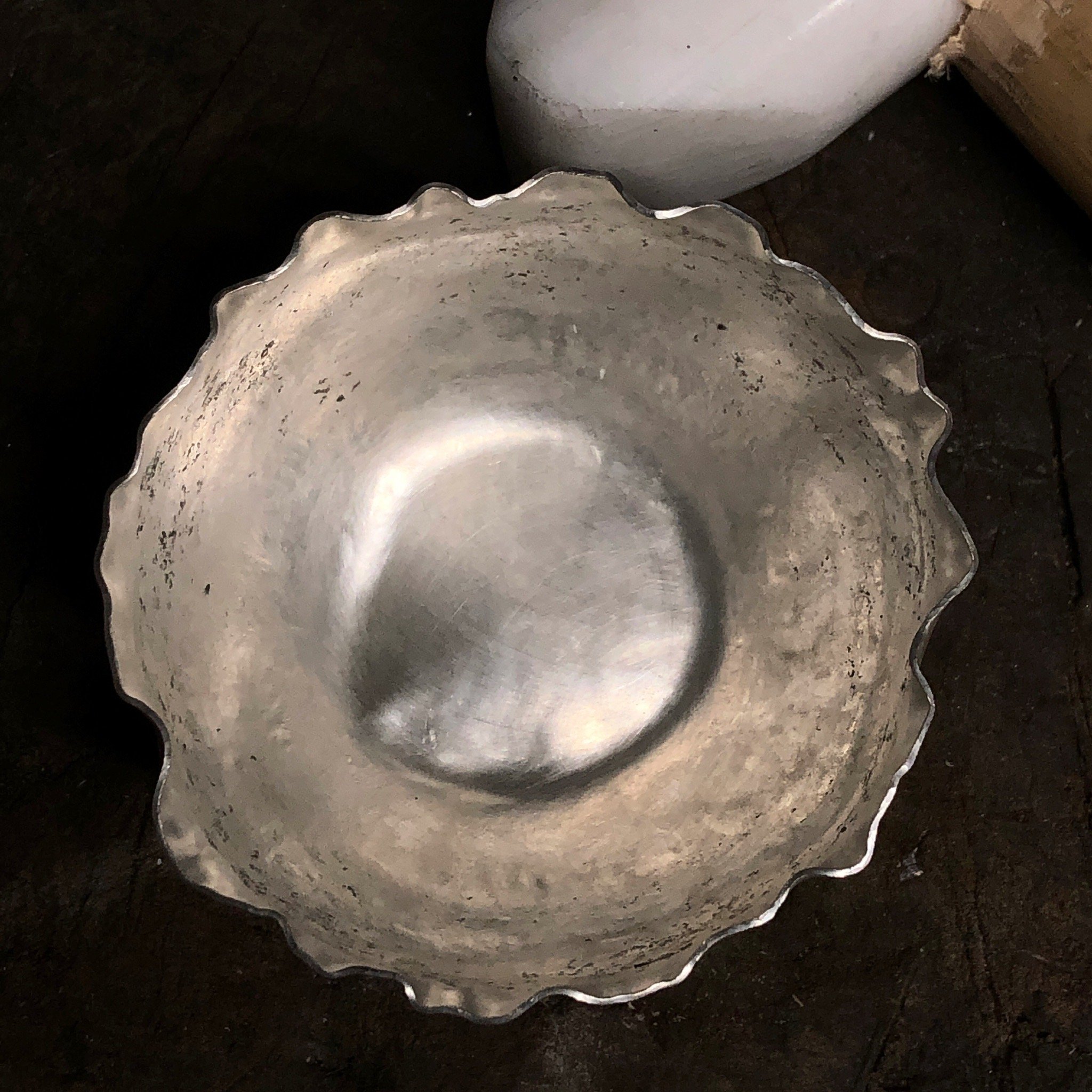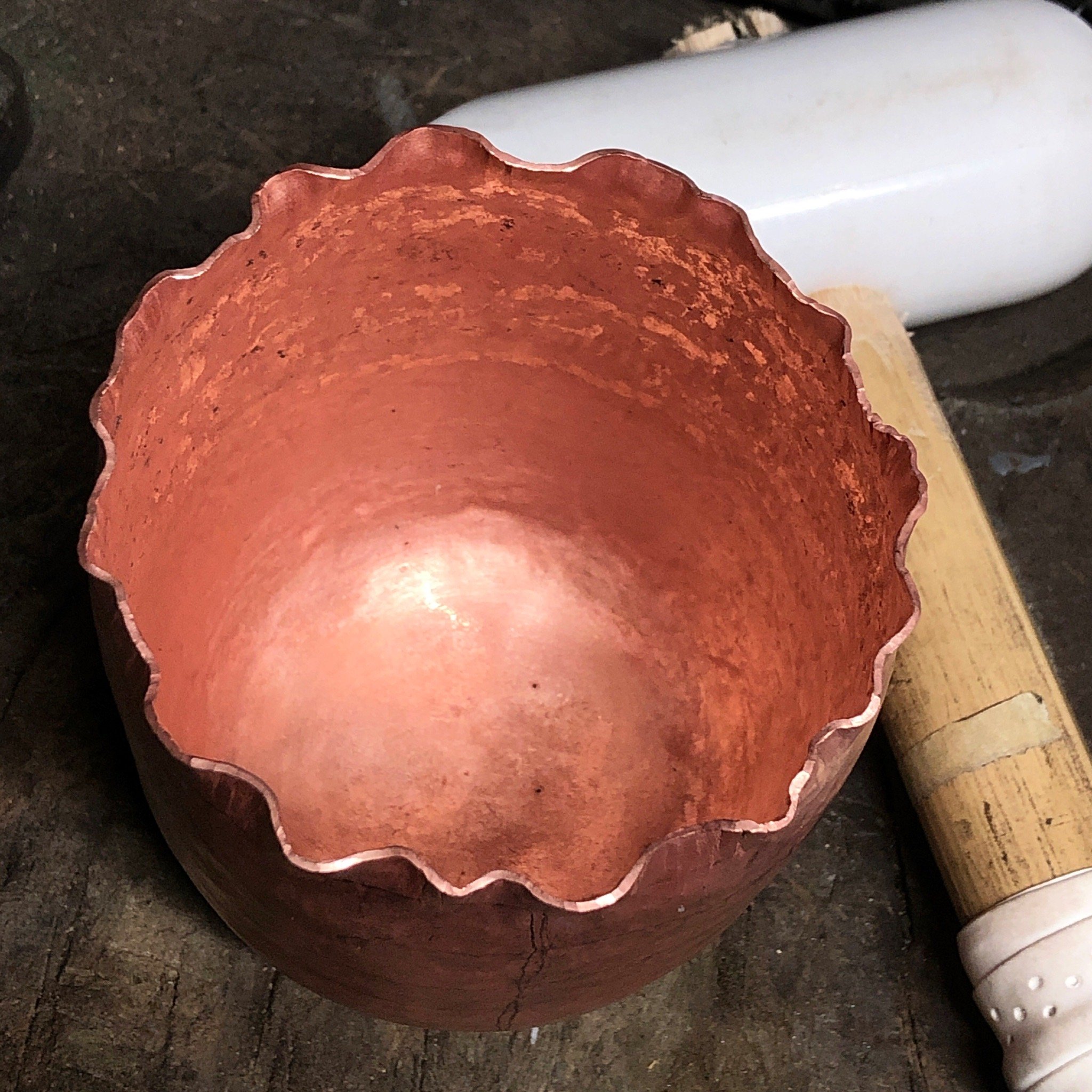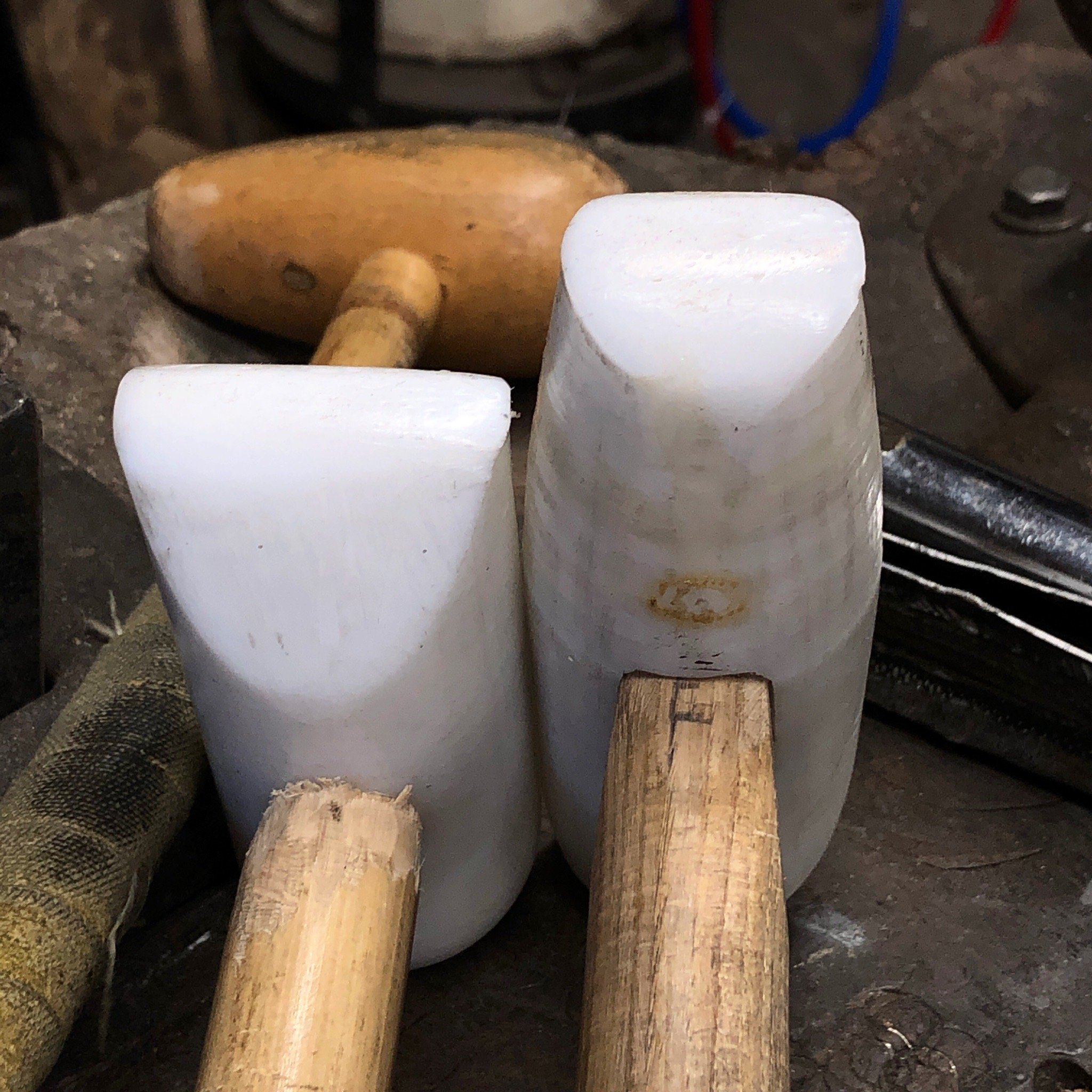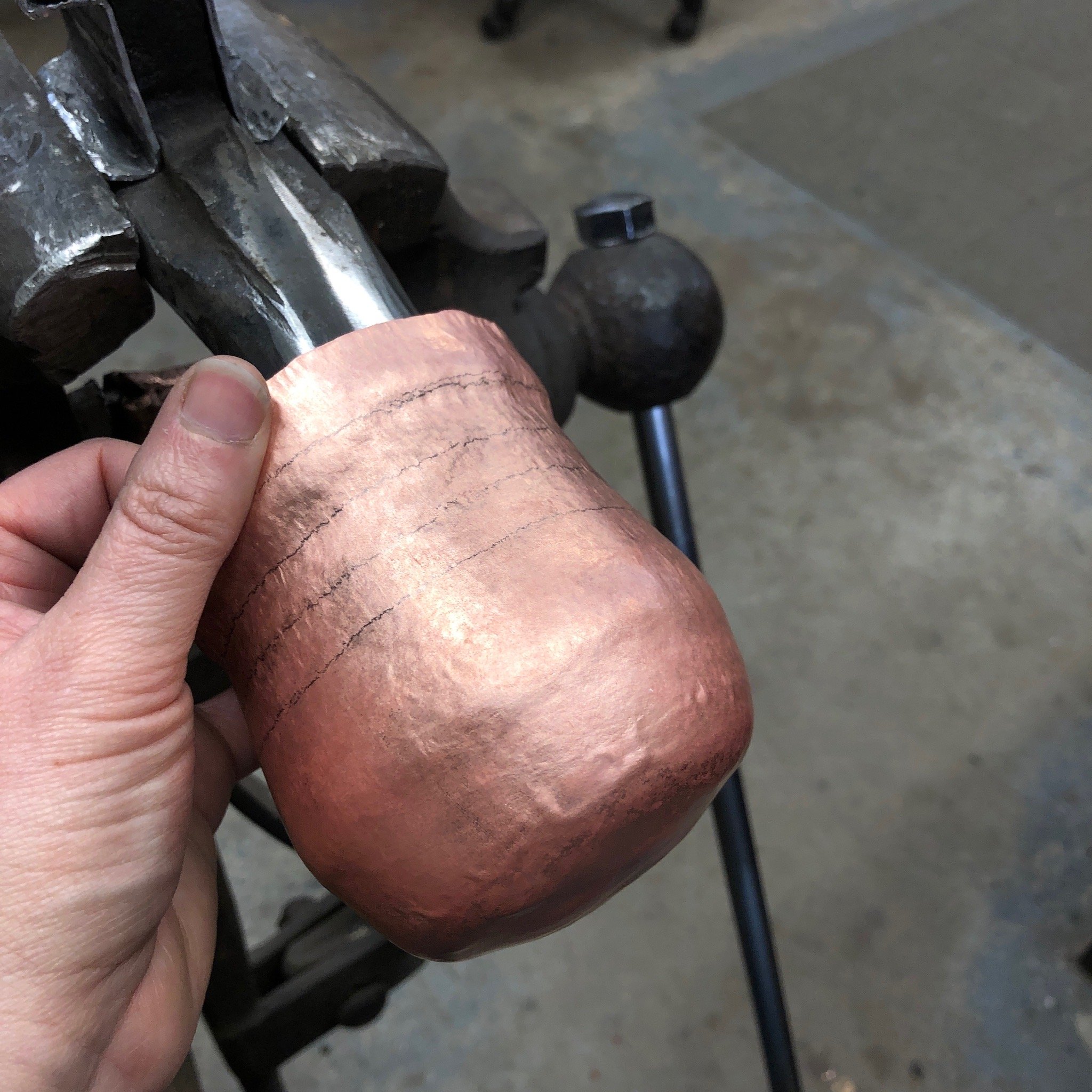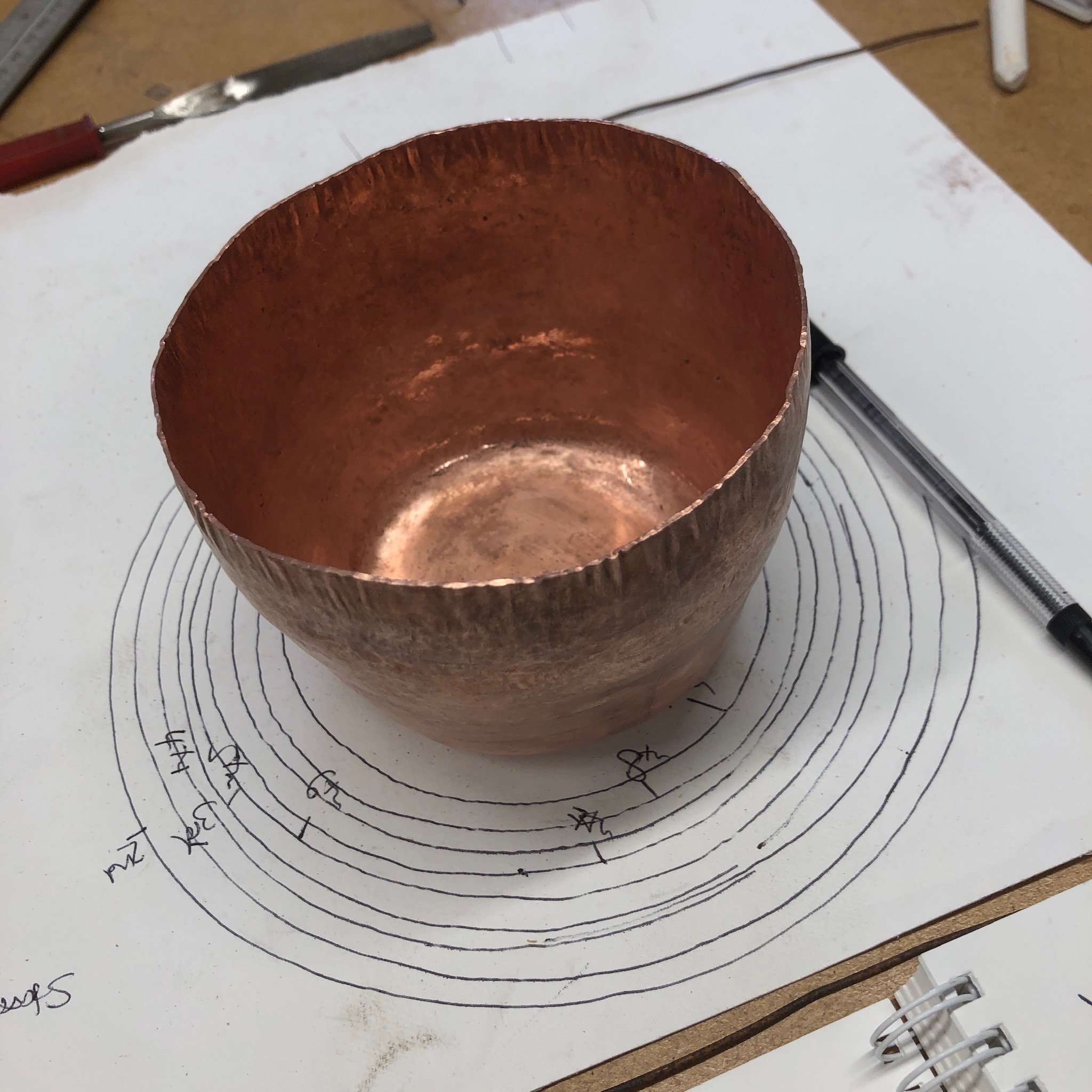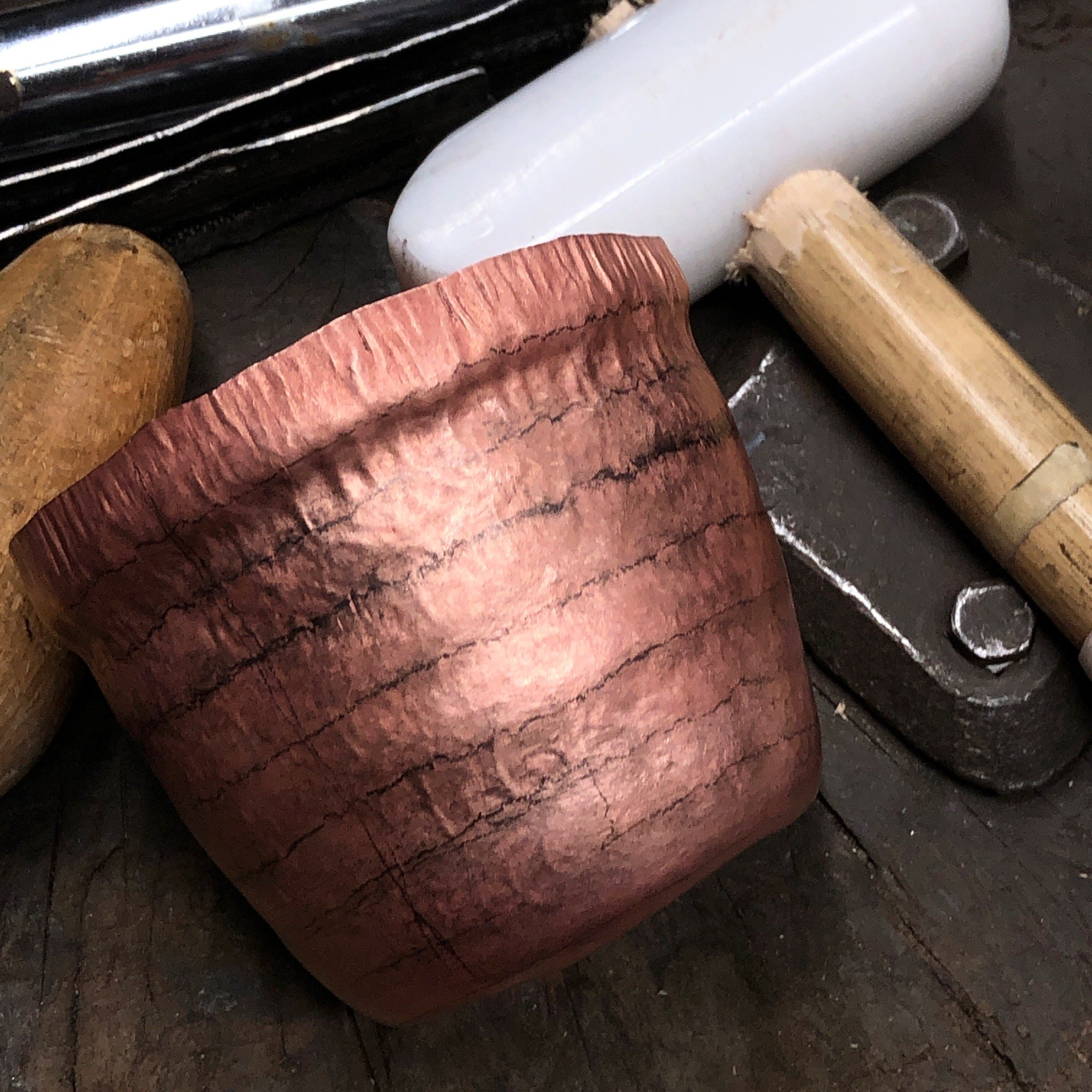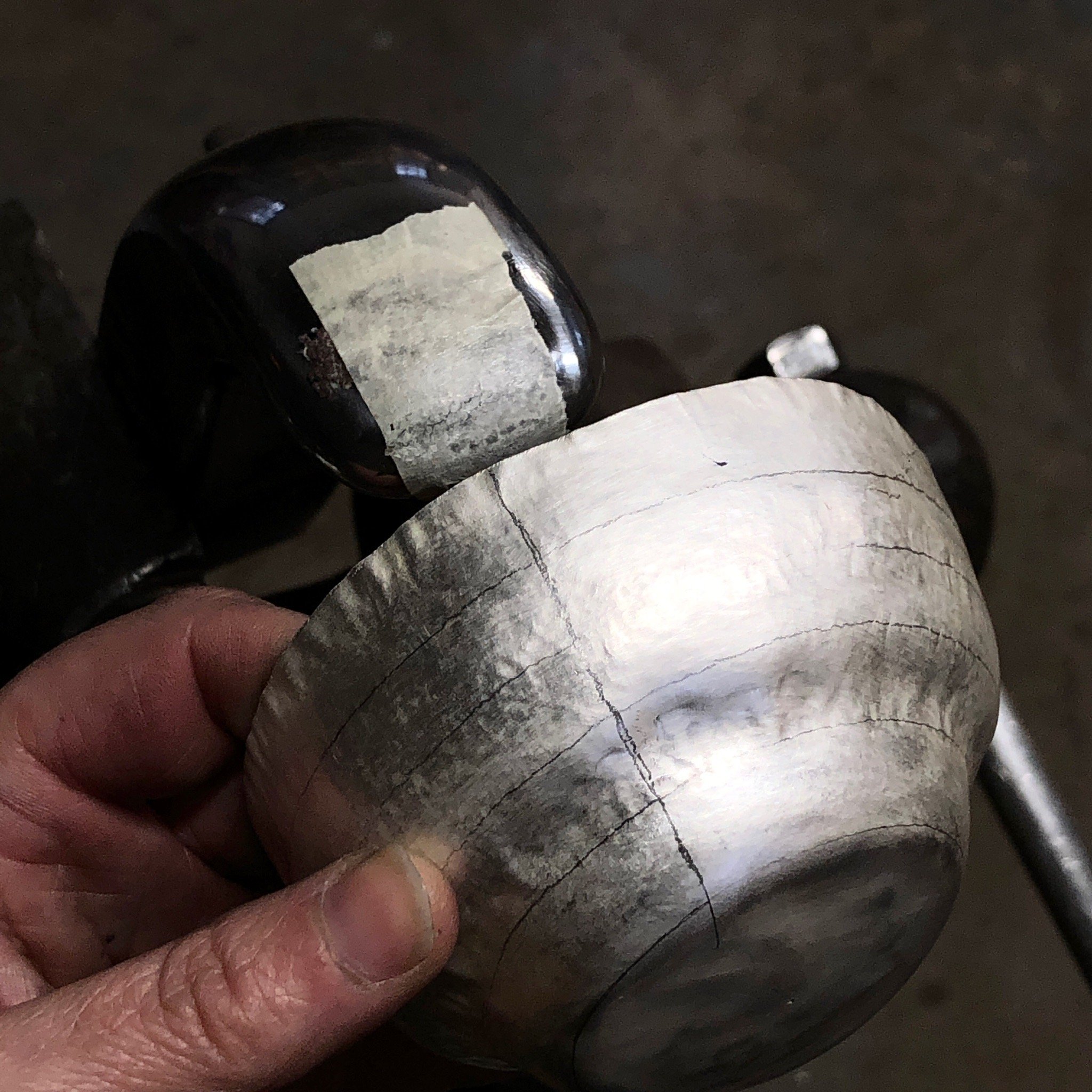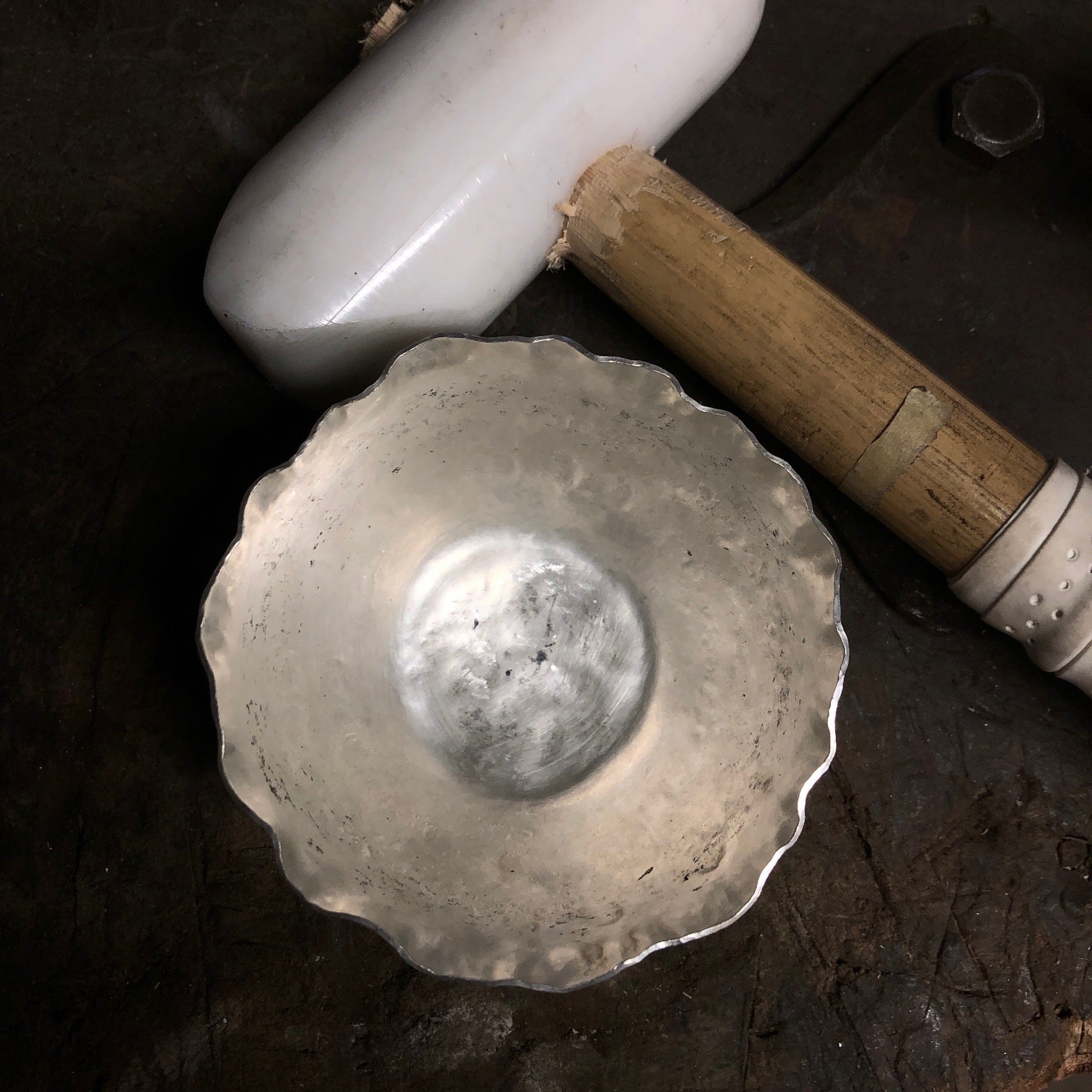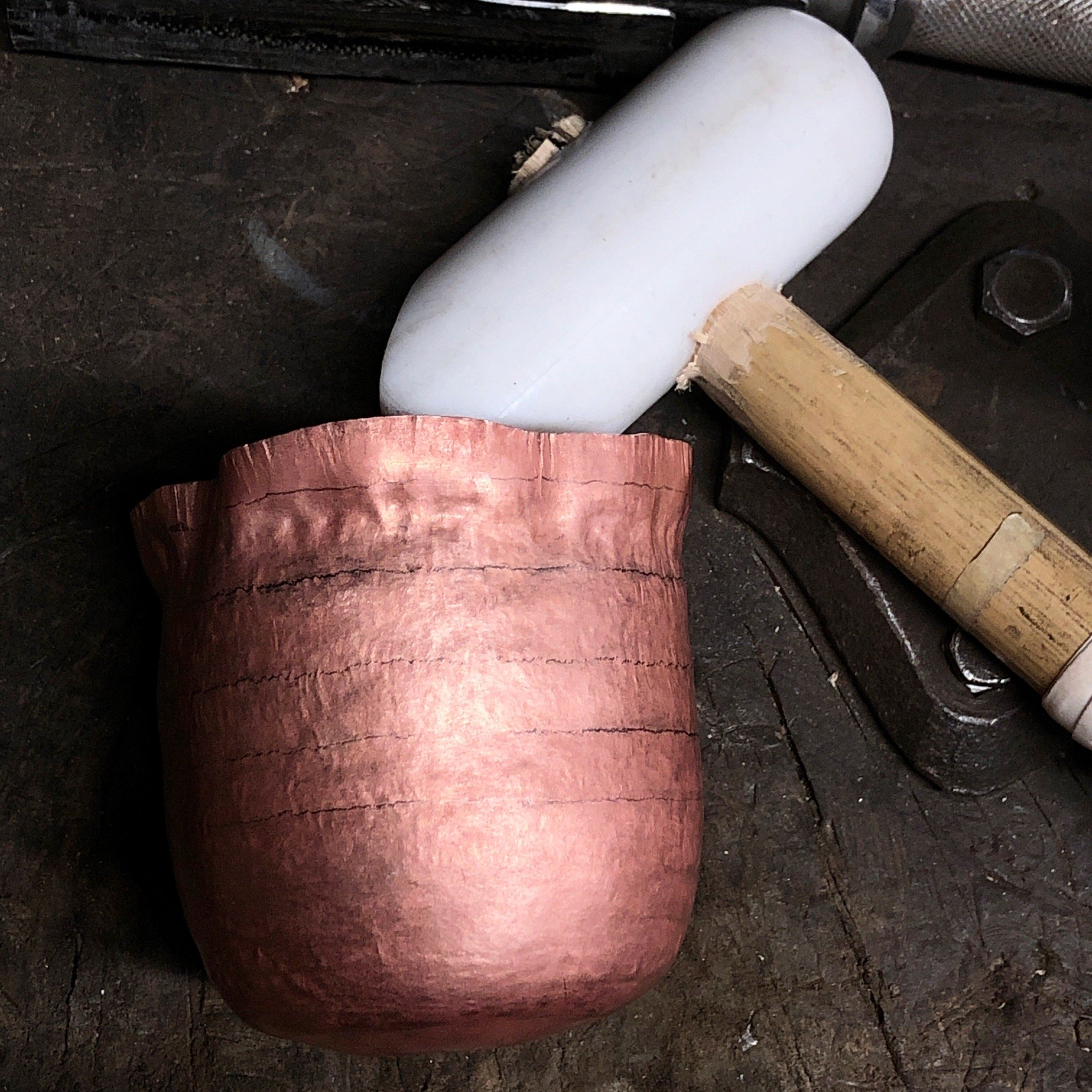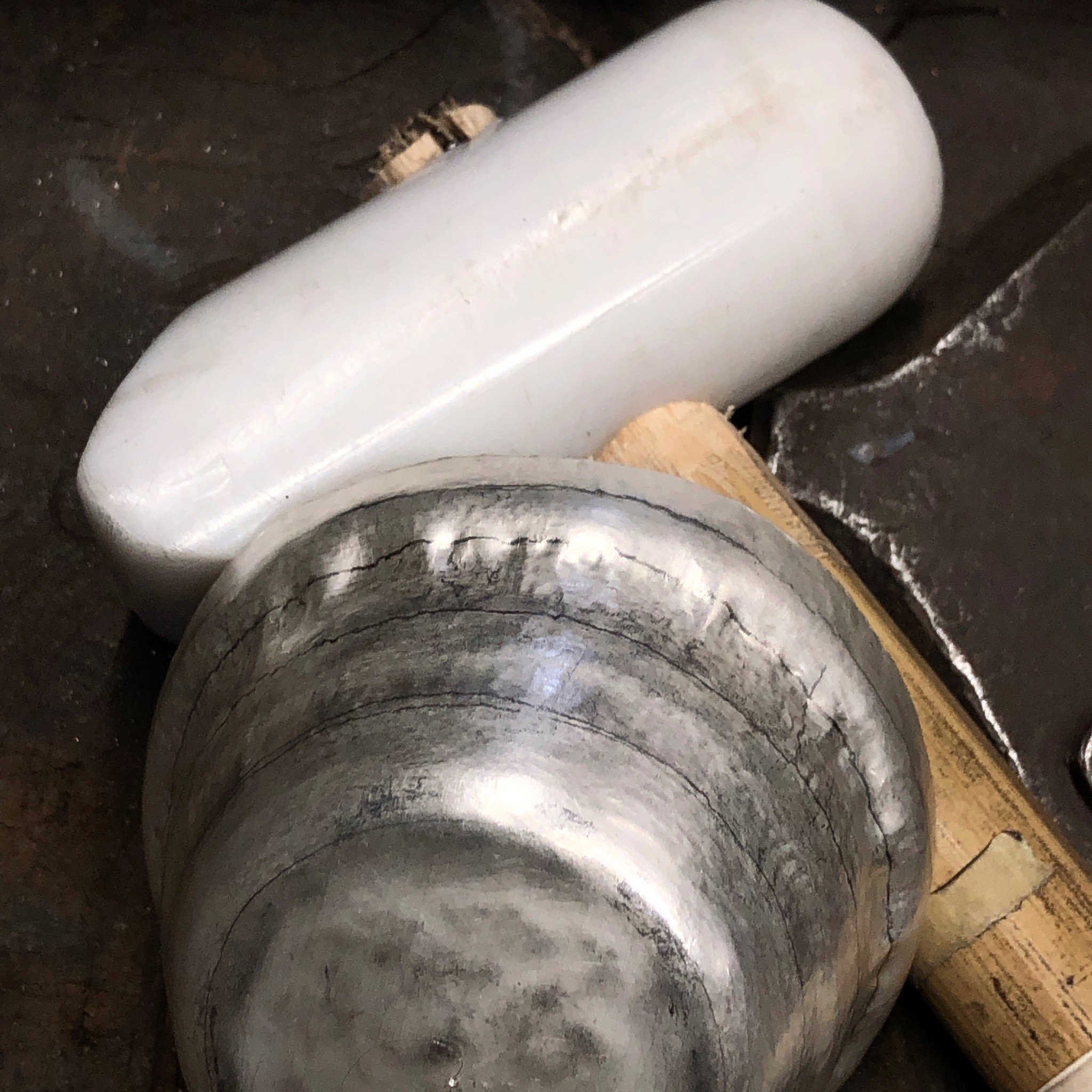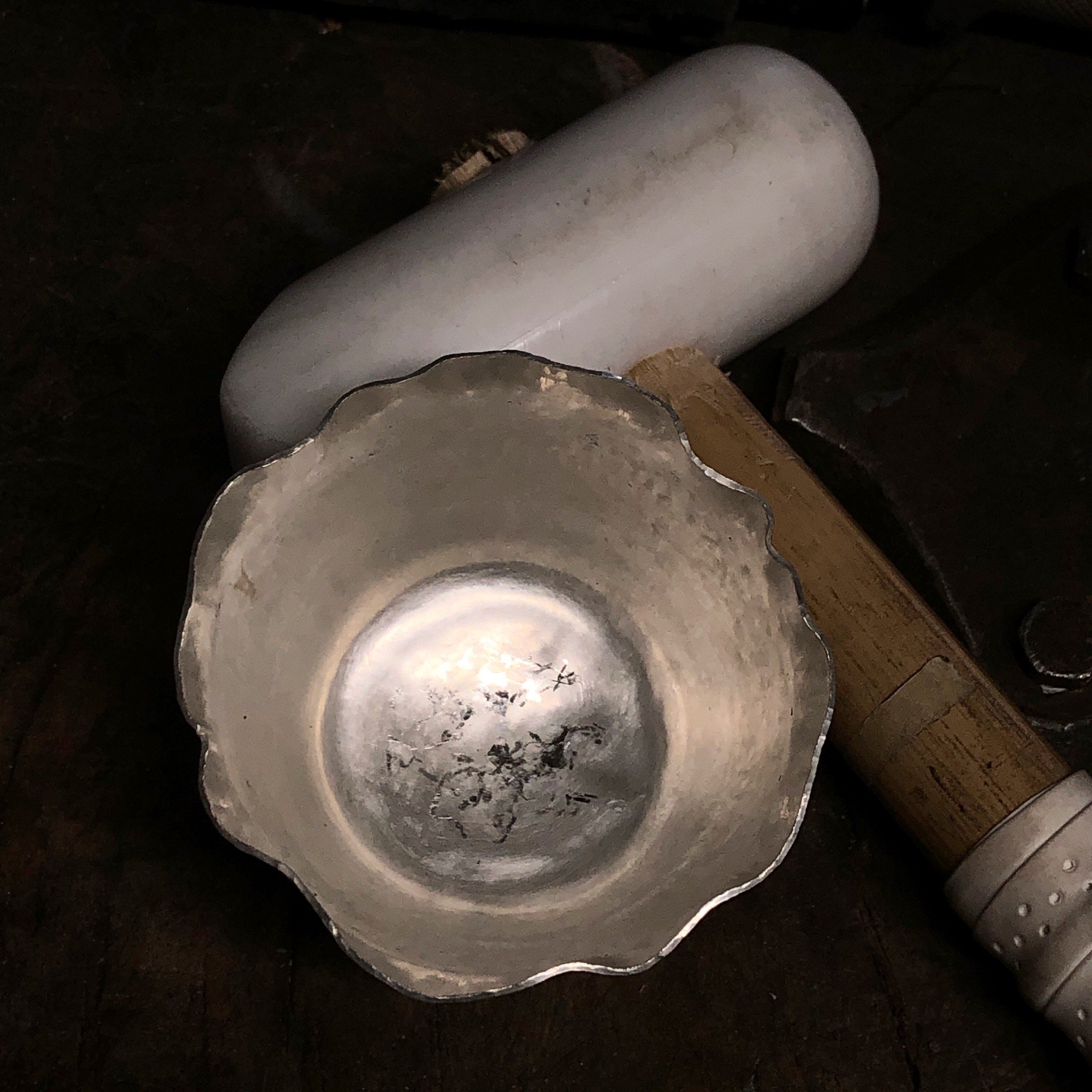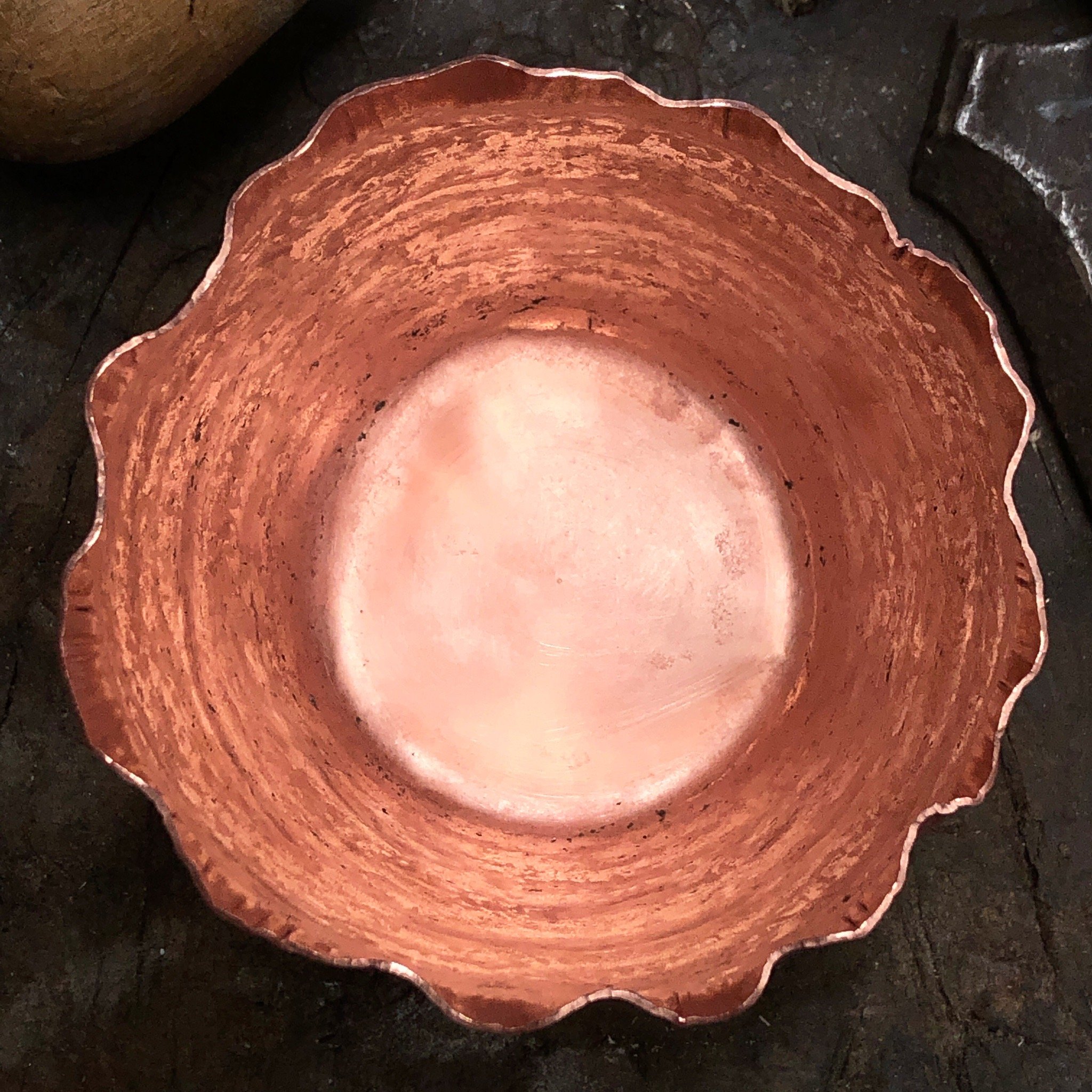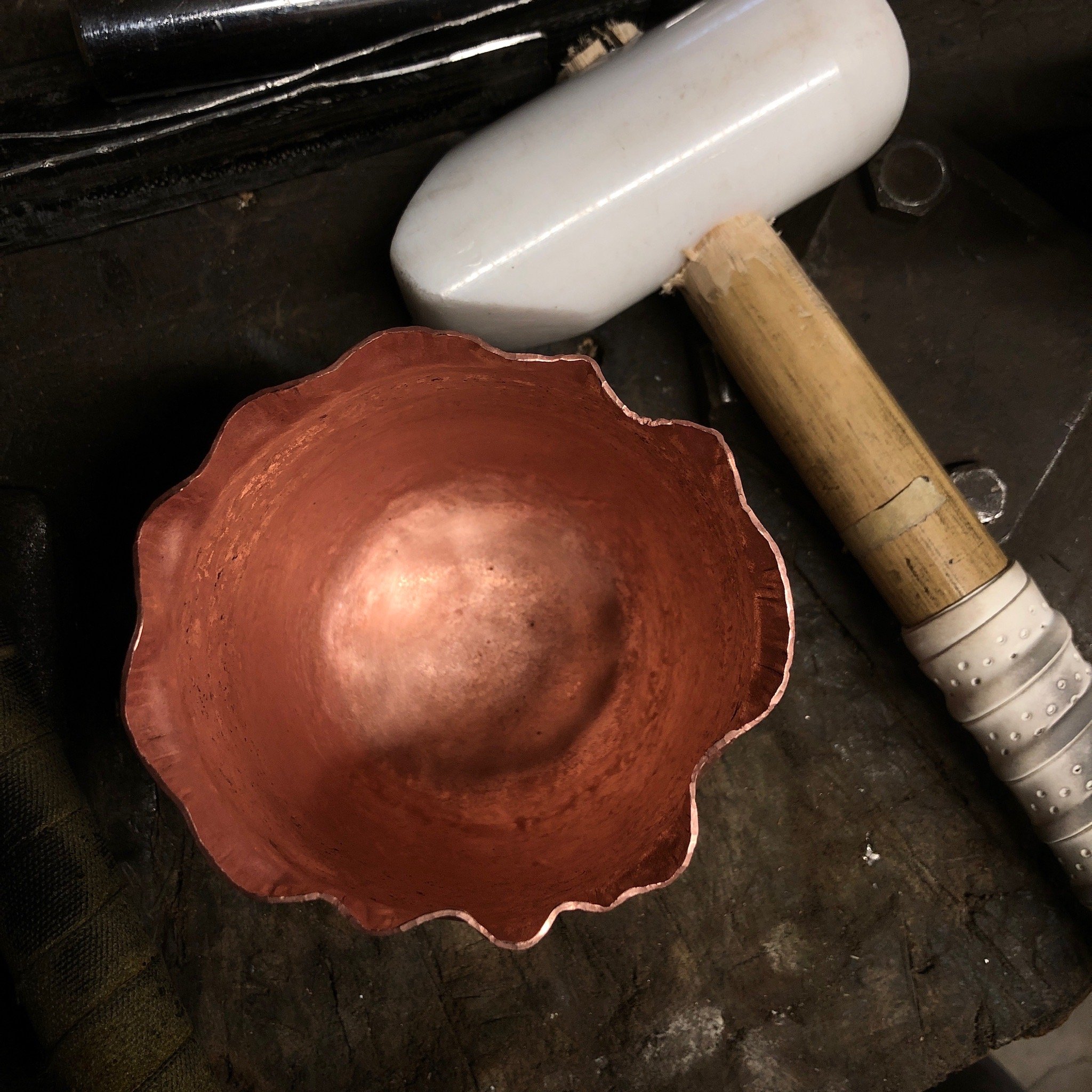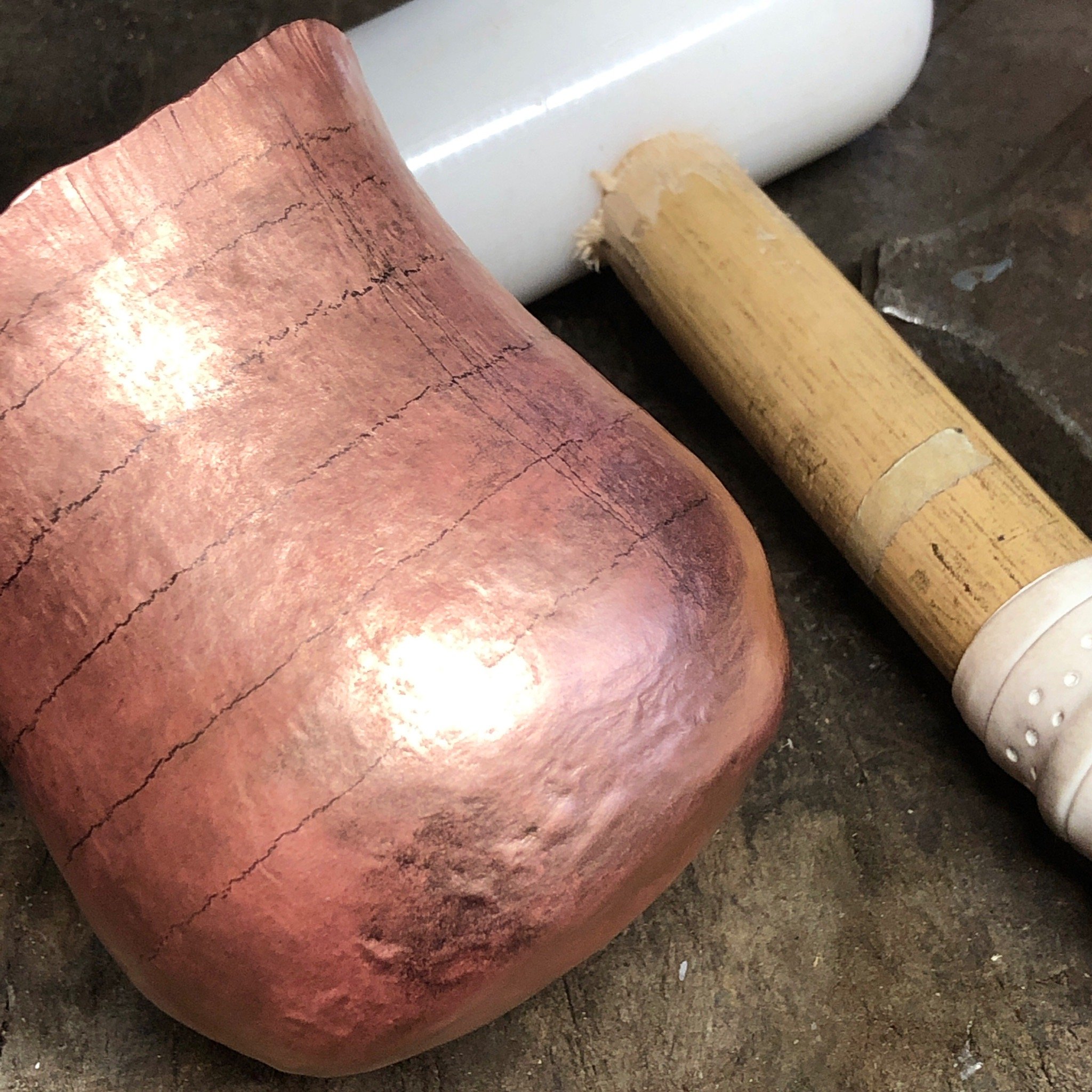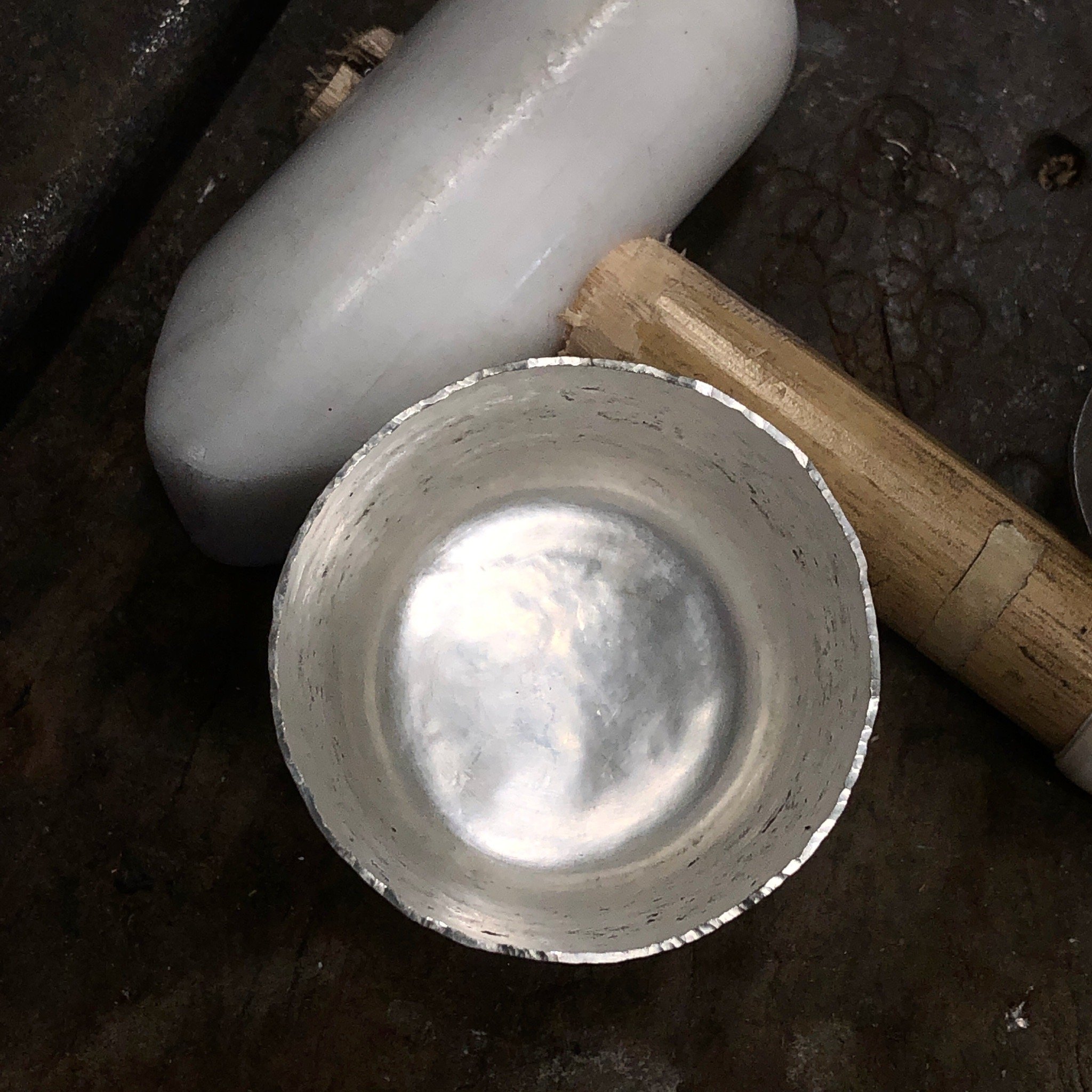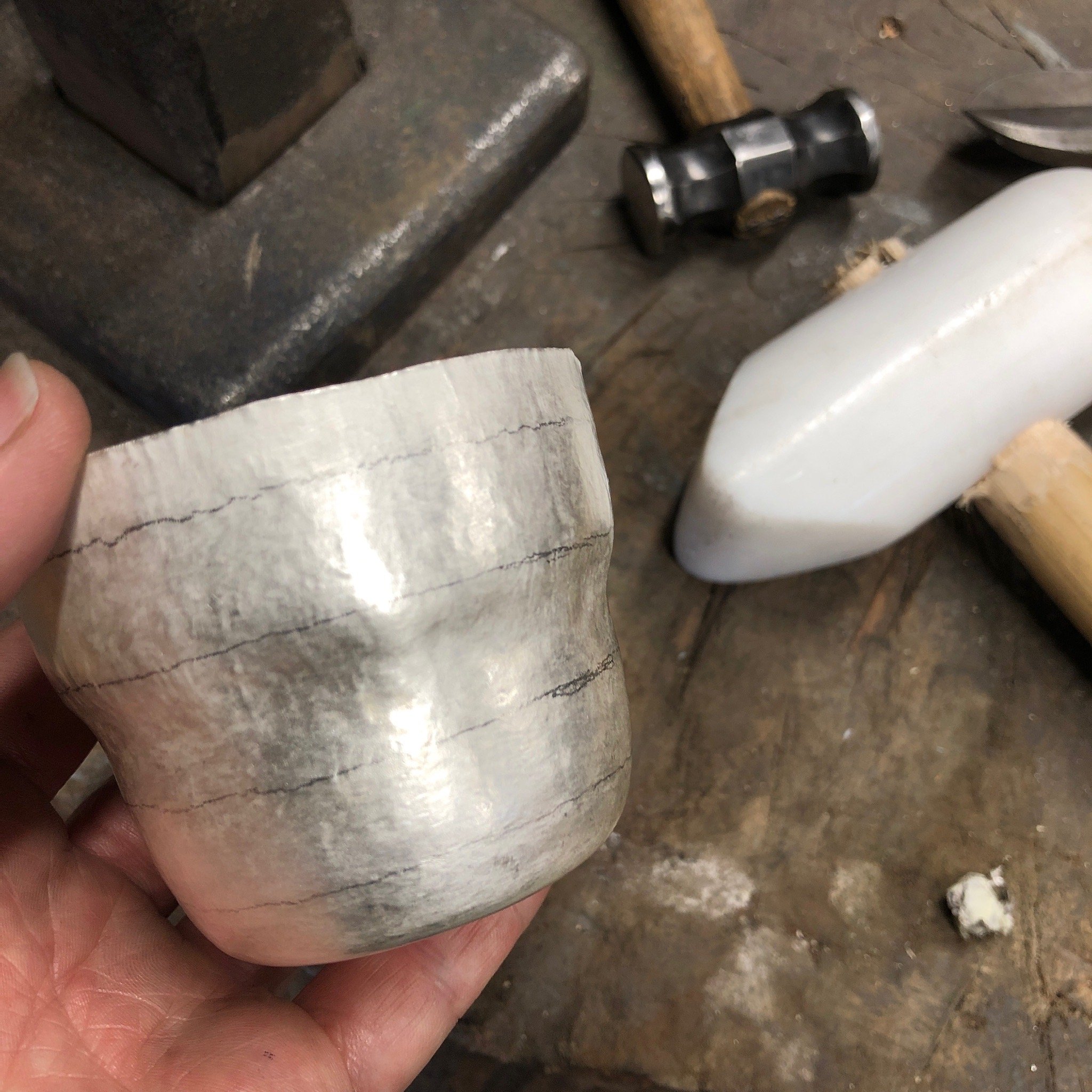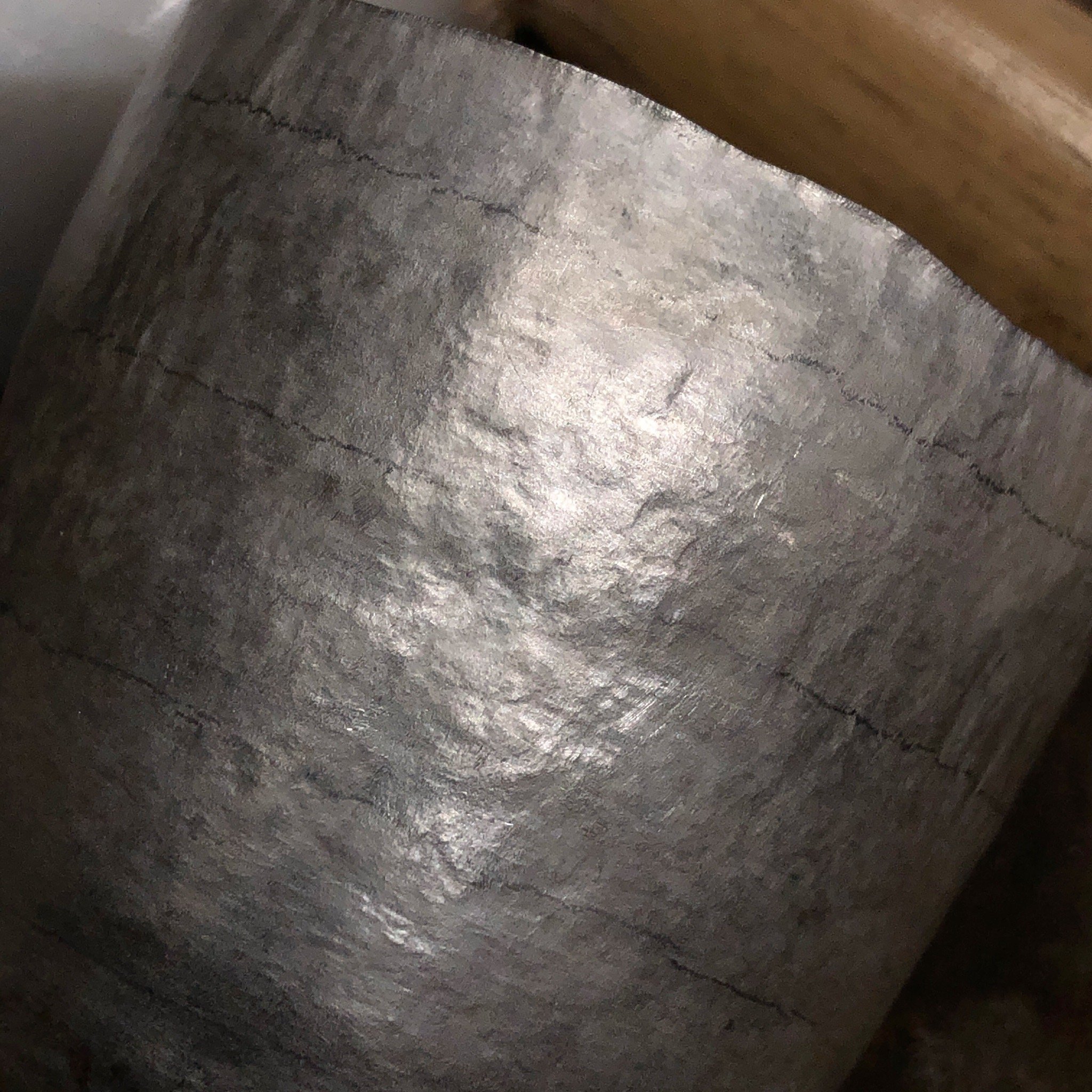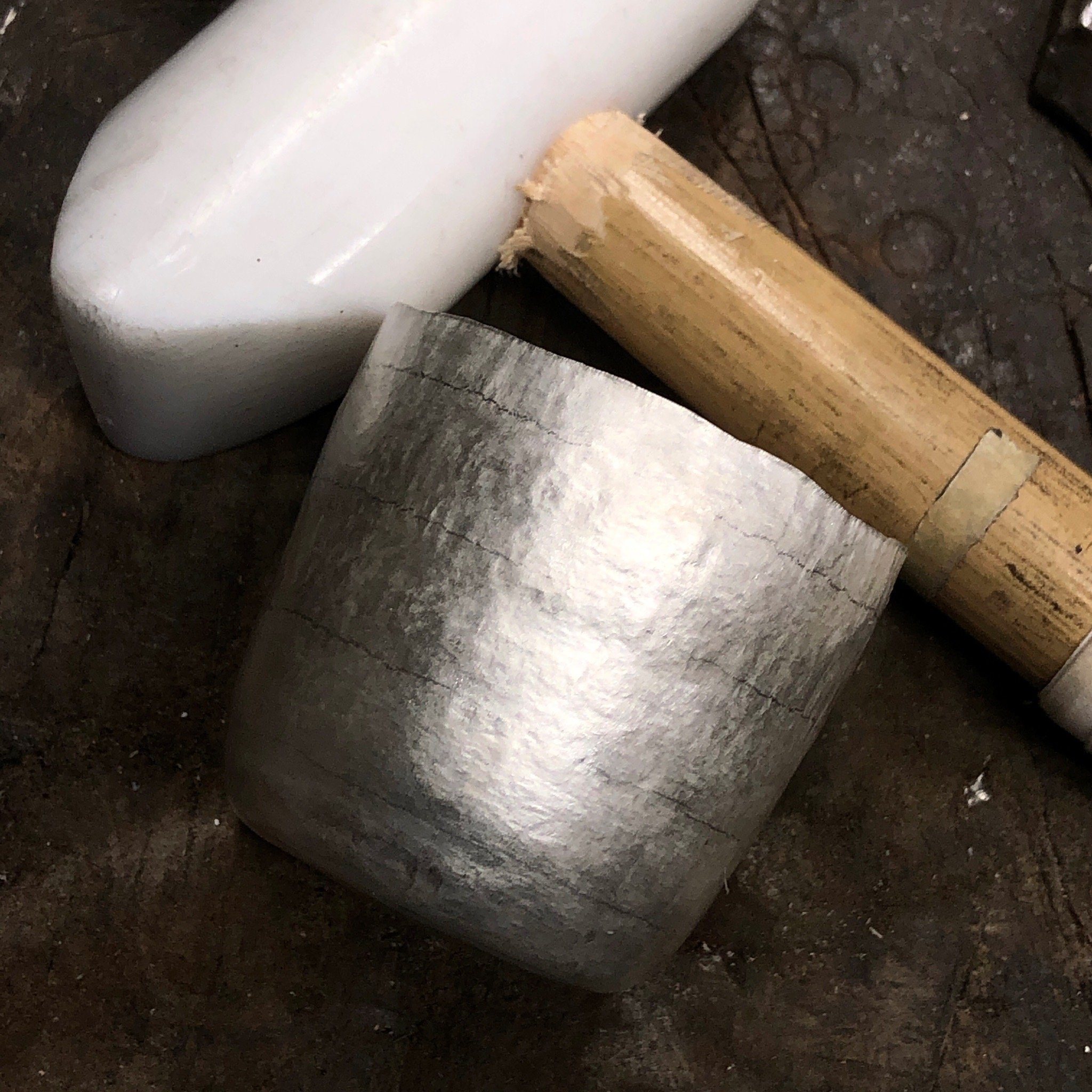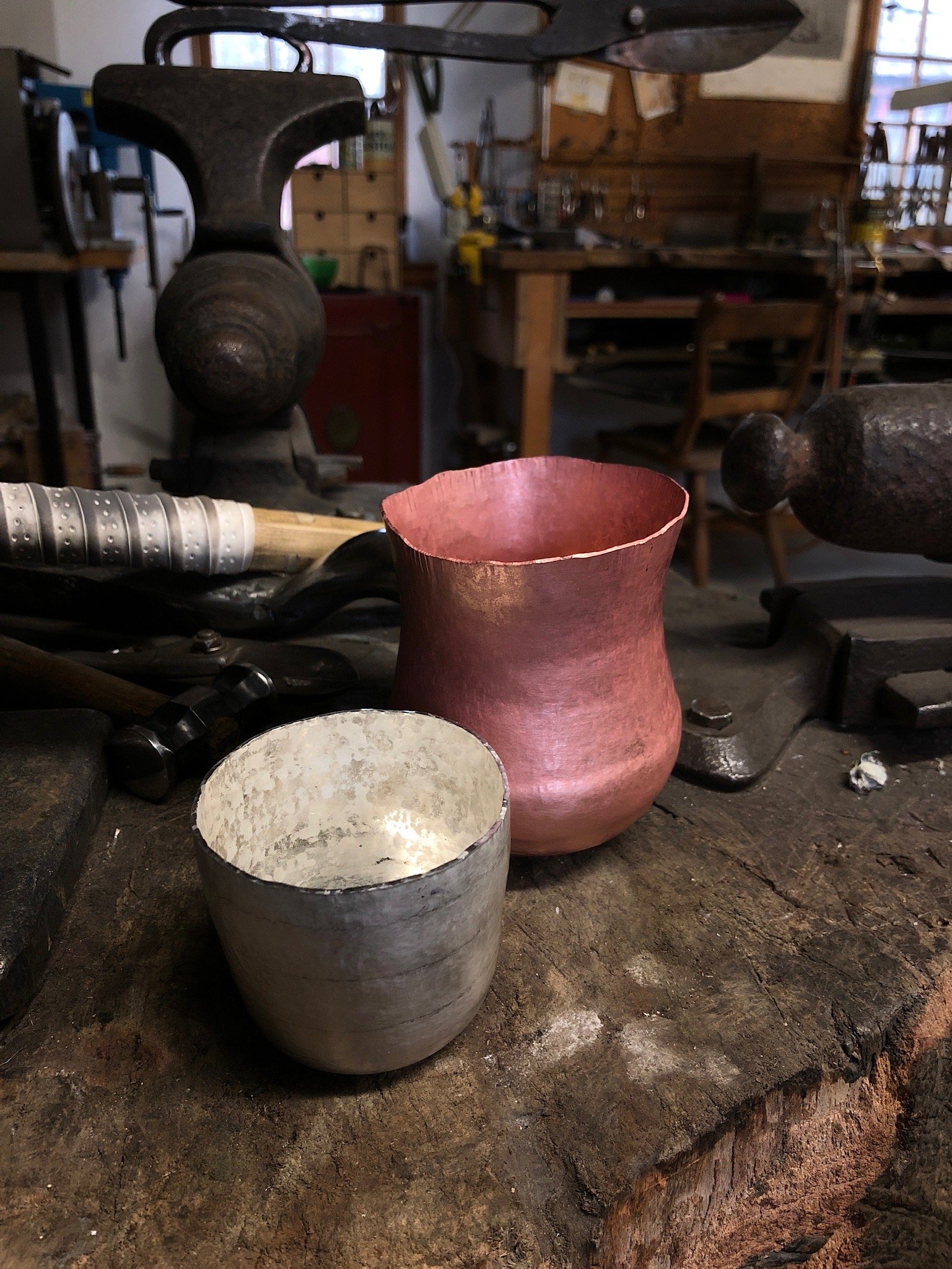DYCP - hammer raising part 1.
Back to School!
At the beginning of April I was delighted to finally take myself up north to the Scottish Borders for a 3 day hammer raising workshop with Adrian Hope. I have wanted to do this for such a long time so was fully prepared to work hard and learn as much as possible and I was not disappointed. The value in what I learnt in those 3 days is immeasurable, I haven’t had any formal tuition since graduating from Uni in 2006. Just being in this space and talking to someone with such a wealth of knowledge, you learn things that you cant read in books or view on Youtube!
The Workshop
The workshop of Hope and Lewin where I spent 3 brilliant days, learning so much!
Useful tools.
One of the reasons for visiting Adrian in his workshop is that he is probably one of the most practiced silversmiths when it comes to hammer raising in the UK. Following conversations with him I realised how much I would benefit from doing this workshop. Not only did I get 3 days worth of tuition and questions answered, I also got to see that some of the most useful tools are often the simplest and created by Adrian himself (usually with help of engineers or other specialists). I am often restricted by the tools and facilities I have but realise there are other ways to get what you need. Now to find experts to collaborate with on some new tools…
Why hammer raising?
Hammer raising has been my passion since the first year of university, however being such a slow and laborious process is not the most productive way of working. When I work with silver the slow process can be worth while when selling the pieces, however this is much more difficult with copper, which I love working with. In recent years I have been looking for more sustainable ways of working to ensure I can continue to work with this process. There are quicker ways of creating vessel forms but over the last 16 years I have come to realise that for me the process of making is just as important as the resulting piece. I just need to get quicker and more efficient to make it sustainable.
Why continuous learning is important for everyone.
During conversations with Adrian he talked about working with thinner sheet metal, I was taught originally with 0.9mm sheet and have more recently used 1mm. The pieces I raised with Adrian started as 0.65mm silver and 0.5mm copper! This would hugely impact cost of material, especially with silver. He also talked about using a combination of wood, nylon and steel tools to create less impact on the metal and the maker. Both pieces I raised with Adrian were solely done with a nylon mallet and steel former covered with masking tape. The importance of the tool you are striking with is weight rather than material so the nylon didn’t feel any more difficult than working with a steel hammer.
I was also shown a different way of raising than I have been practicing over the years and it is quite revolutionary! I am still in the very early stages of using a slightly different process and a combination of tools, but so far it has been a positive move. I raised 2 pieces (not quite finished) in the 3 day workshop, which is much quicker than anything I have done before, especially since I was analysing and recording every step.
Eat, Sleep, Hammer, Repeat!
I am so grateful to have had this opportunity now and have so may plans for how to move forward with my hammer raising practice. When talking to Adrian before I did the workshop, he constantly reiterated how important practice is, he said I should go away and make 10 or 20 of the same thing and he is right. I am committed to establishing a routine of hammering every week and will work on multiple pieces at once. As part of my project I am also making some fit for purpose tools which I will use for these pieces. I look forward to sharing my progress on this but for now I must go and hammer!
Finally I want to say a huge thank you to Adrian and Linda for such a great experience.
Thanks for reading
Melissa x

